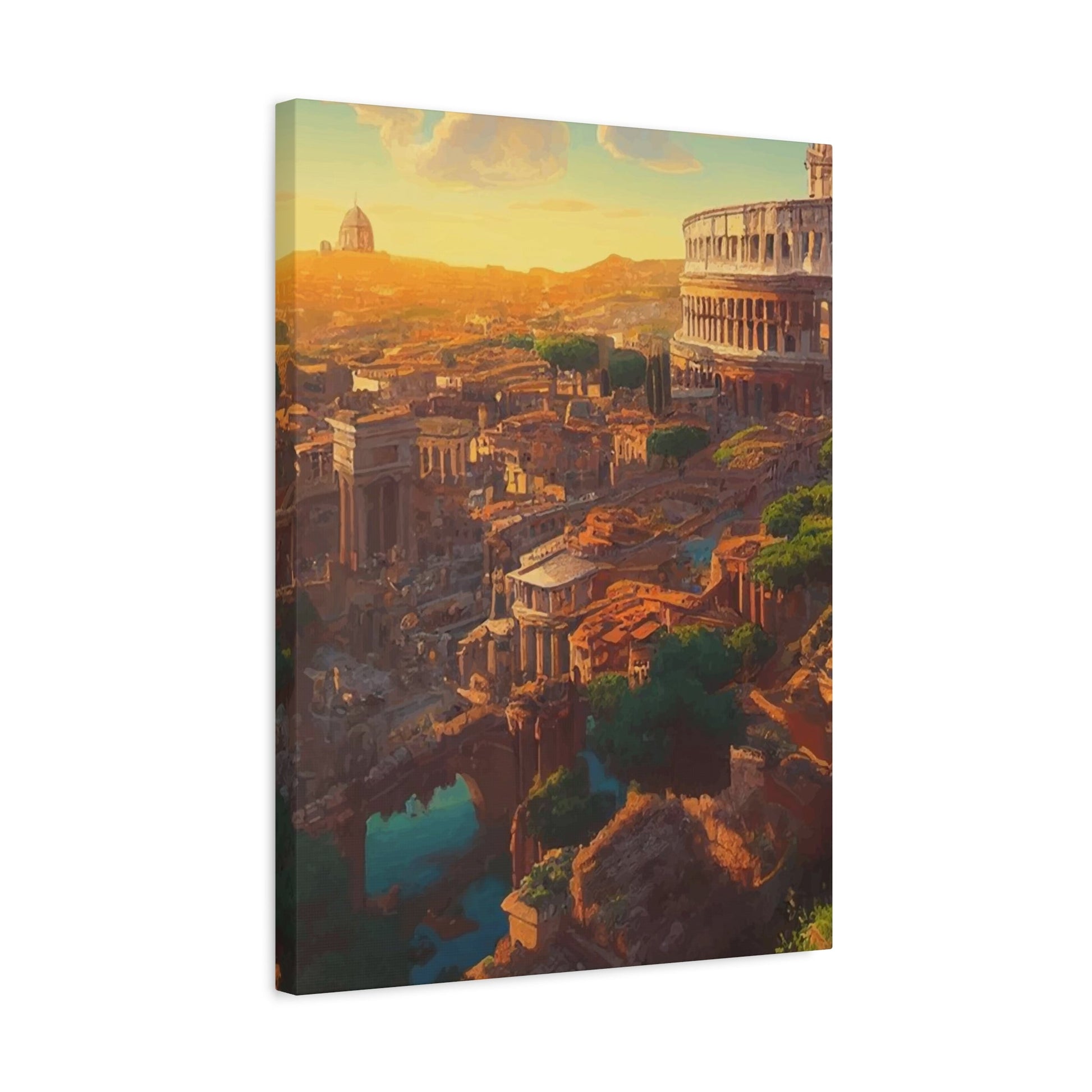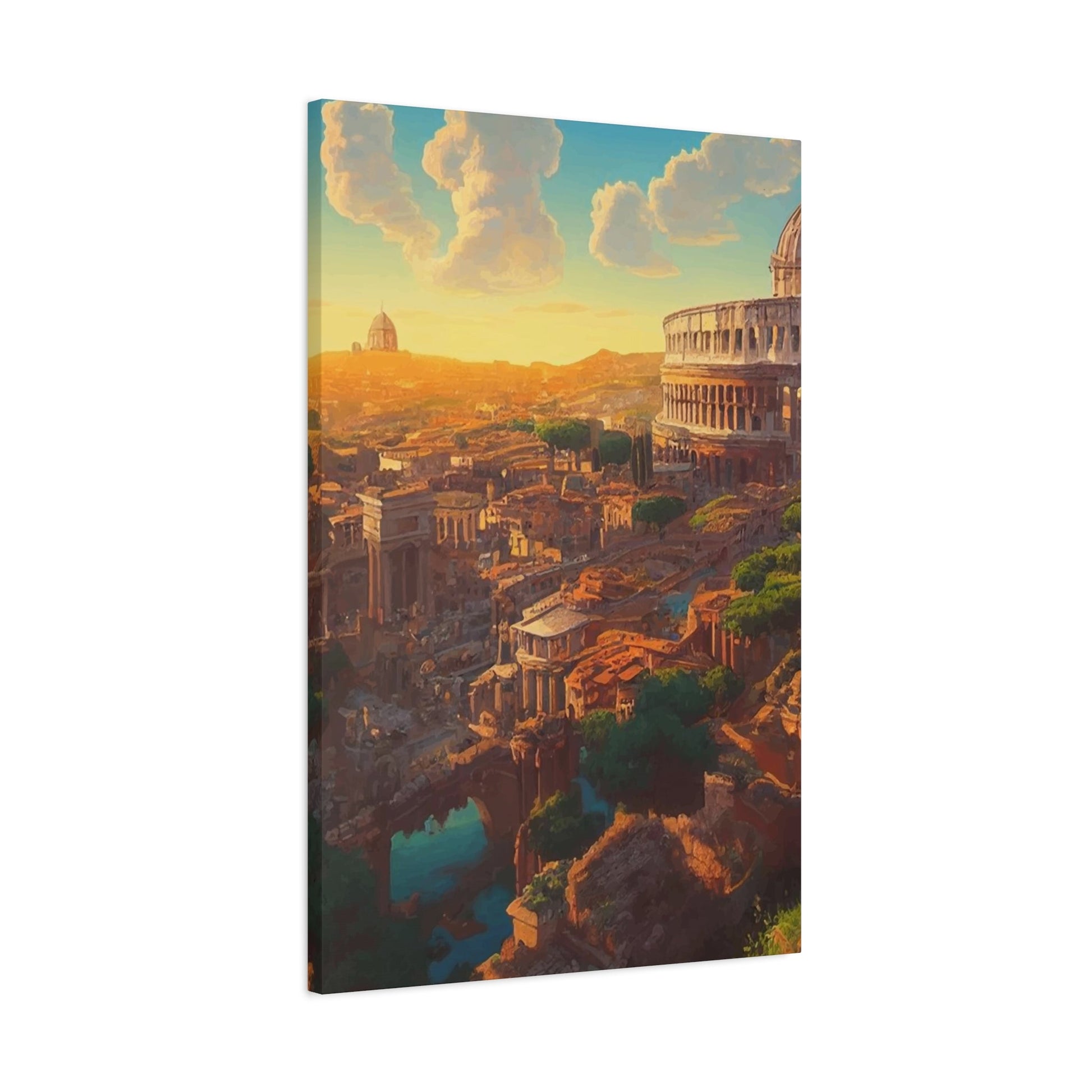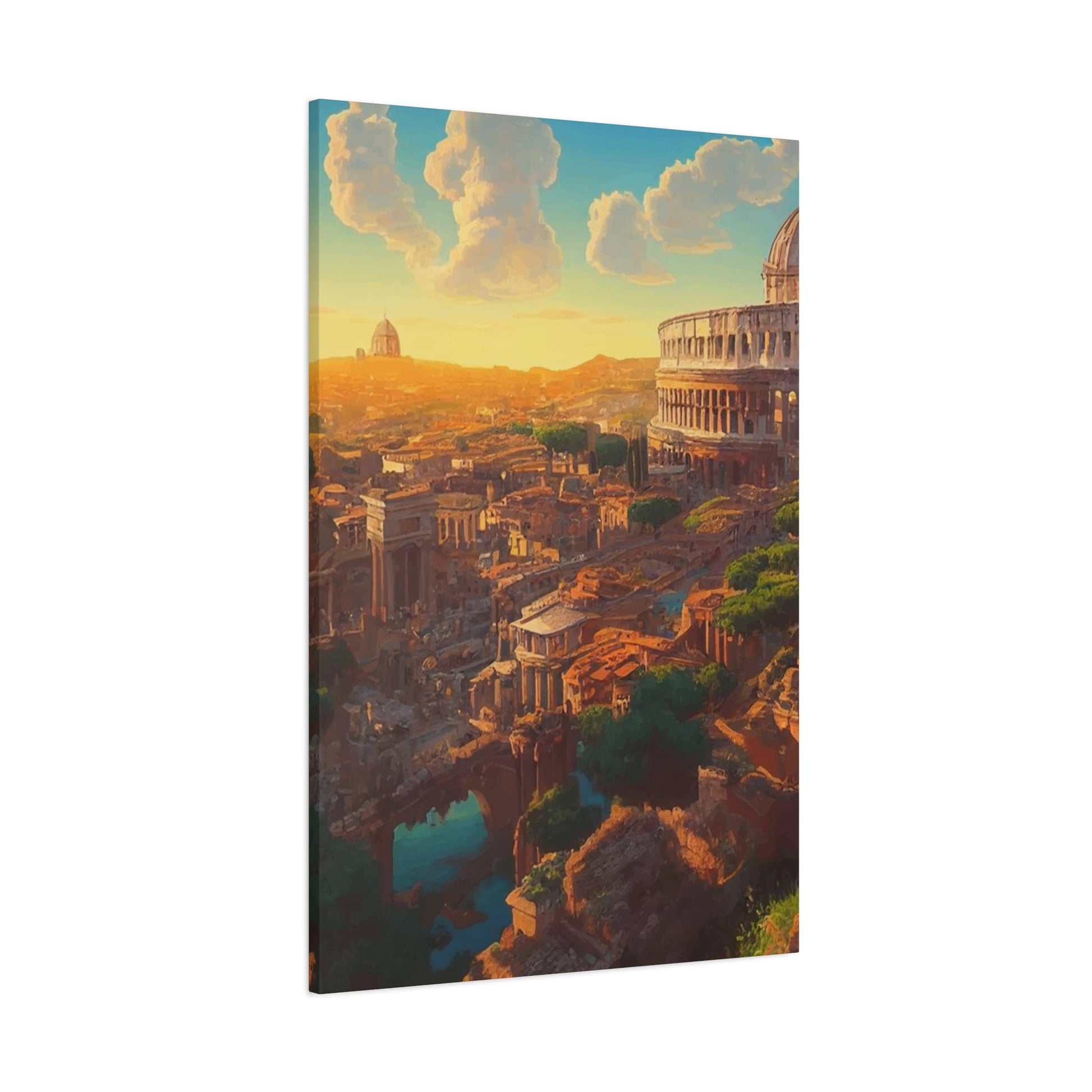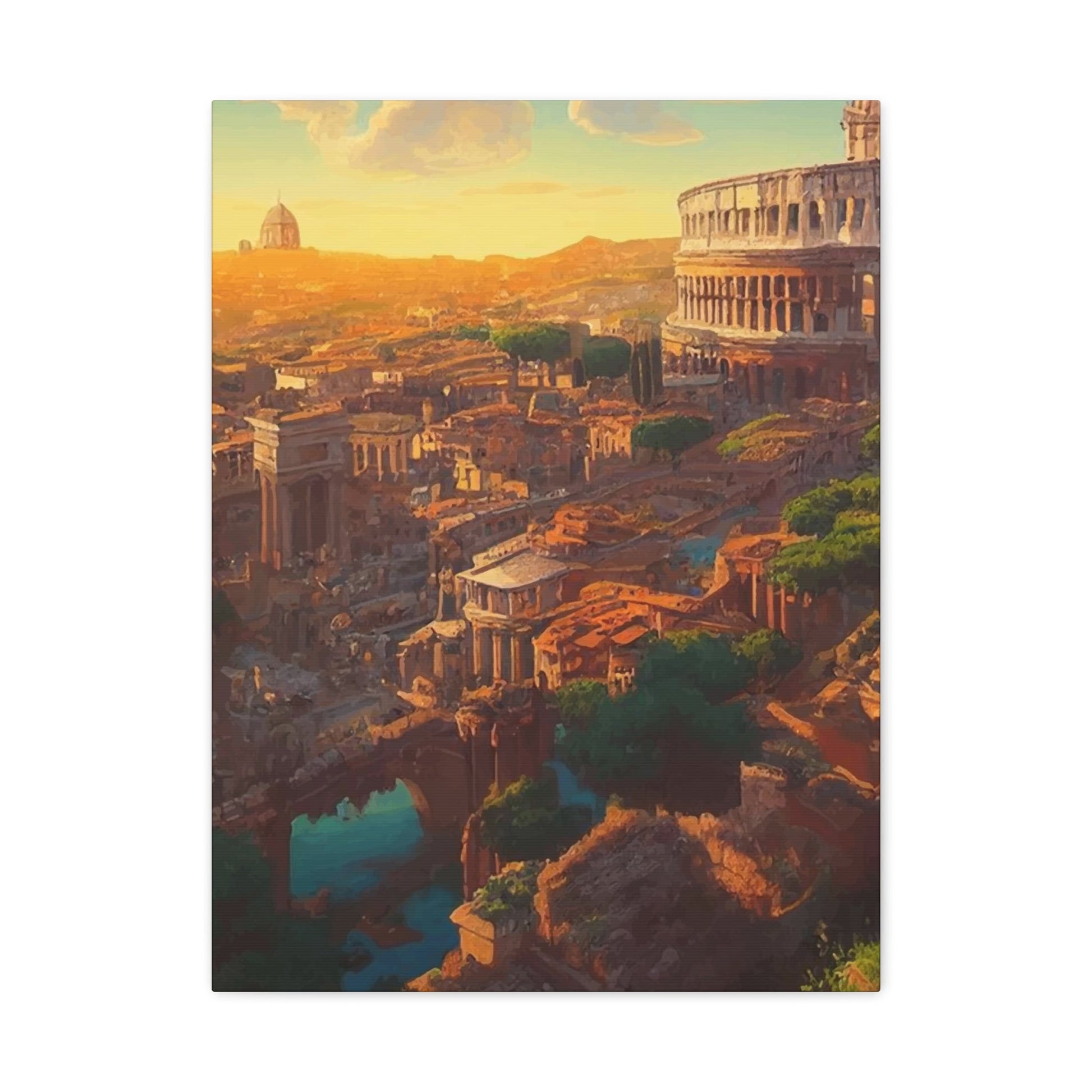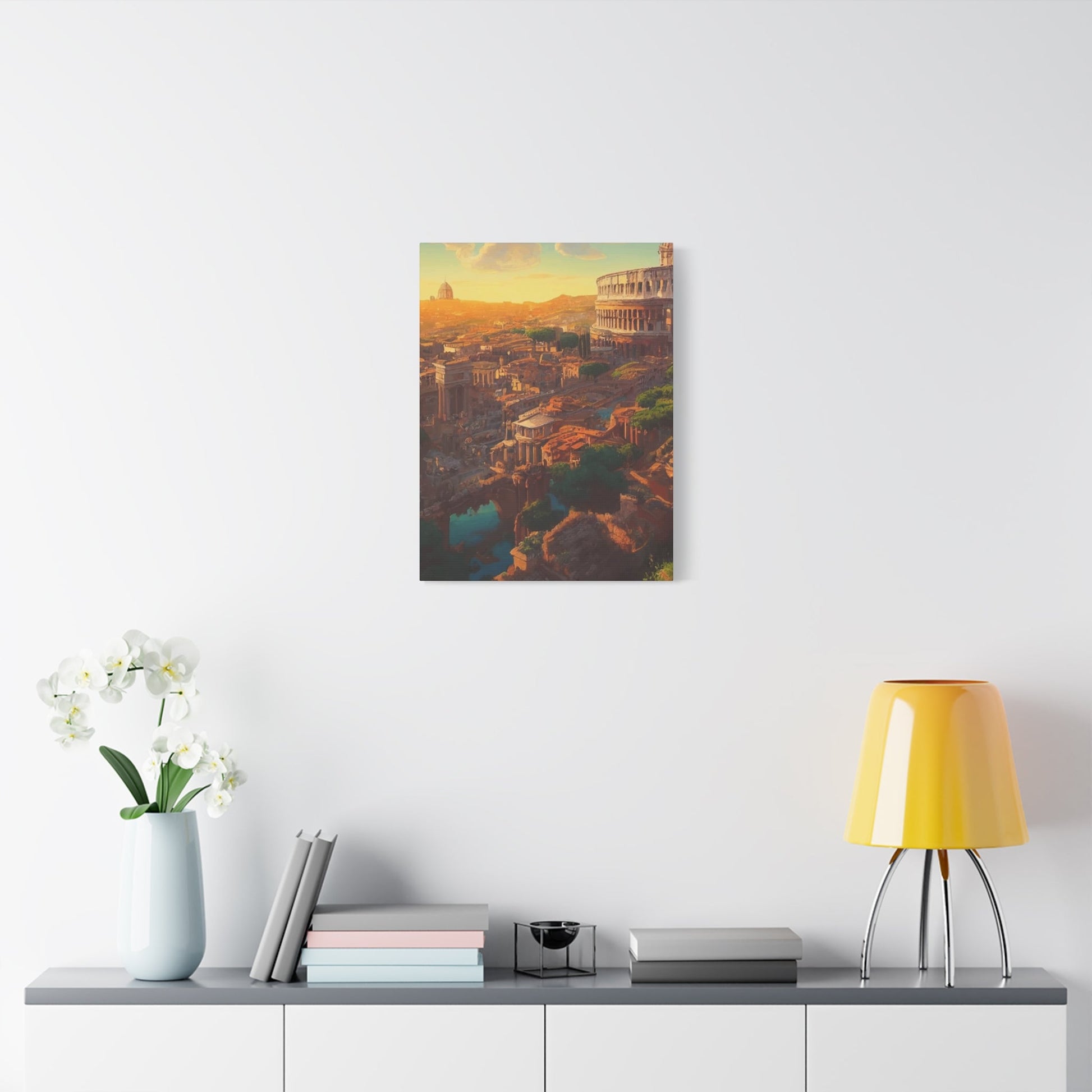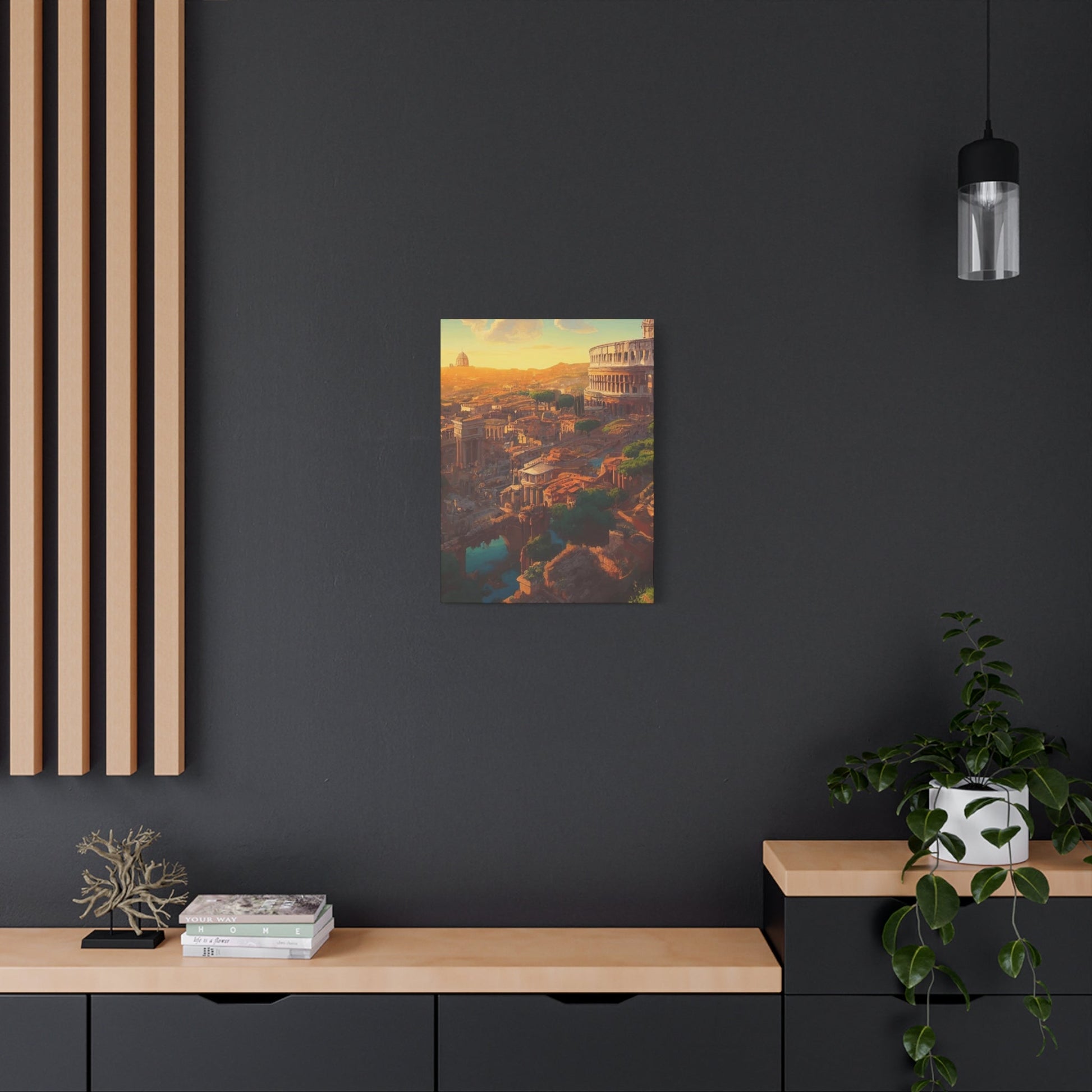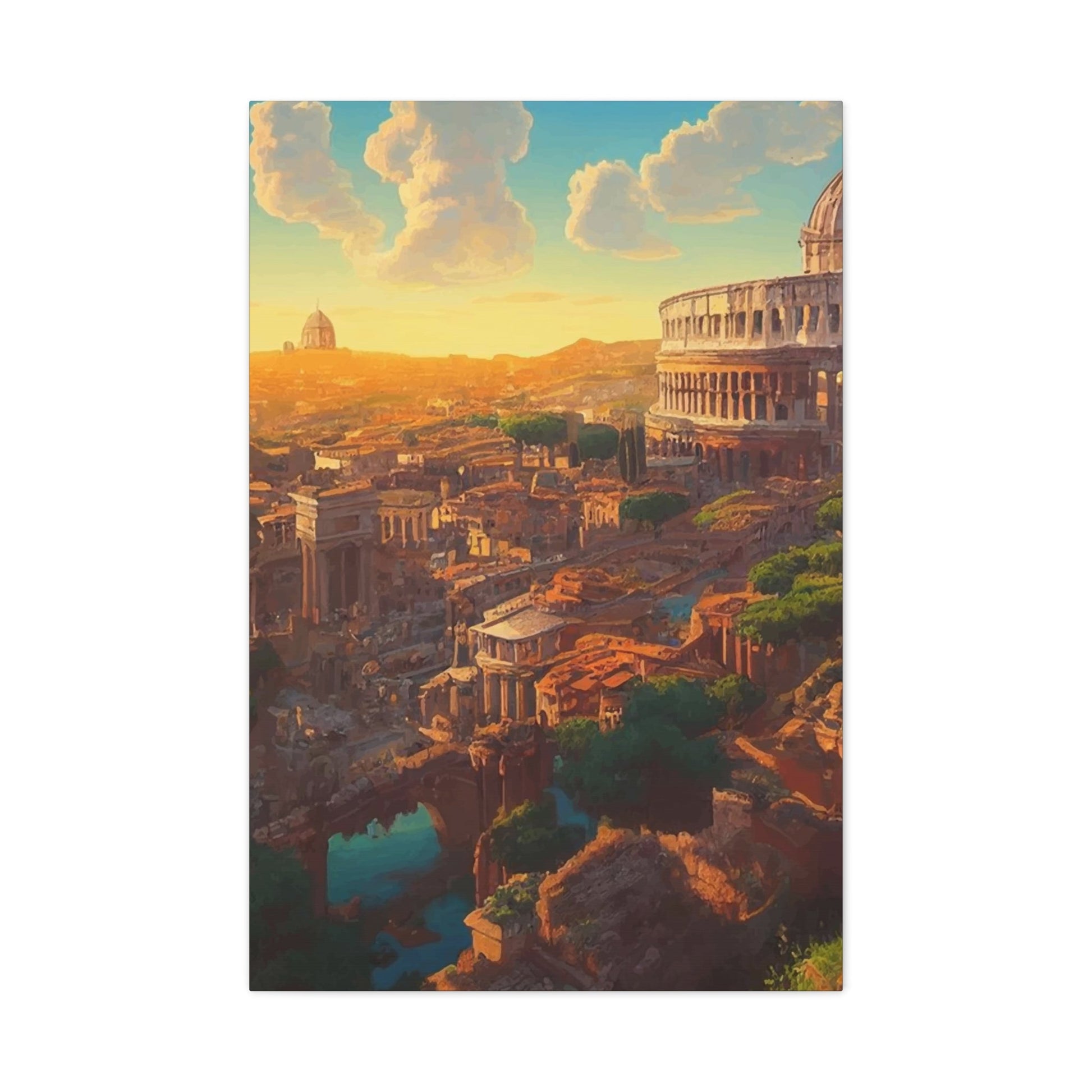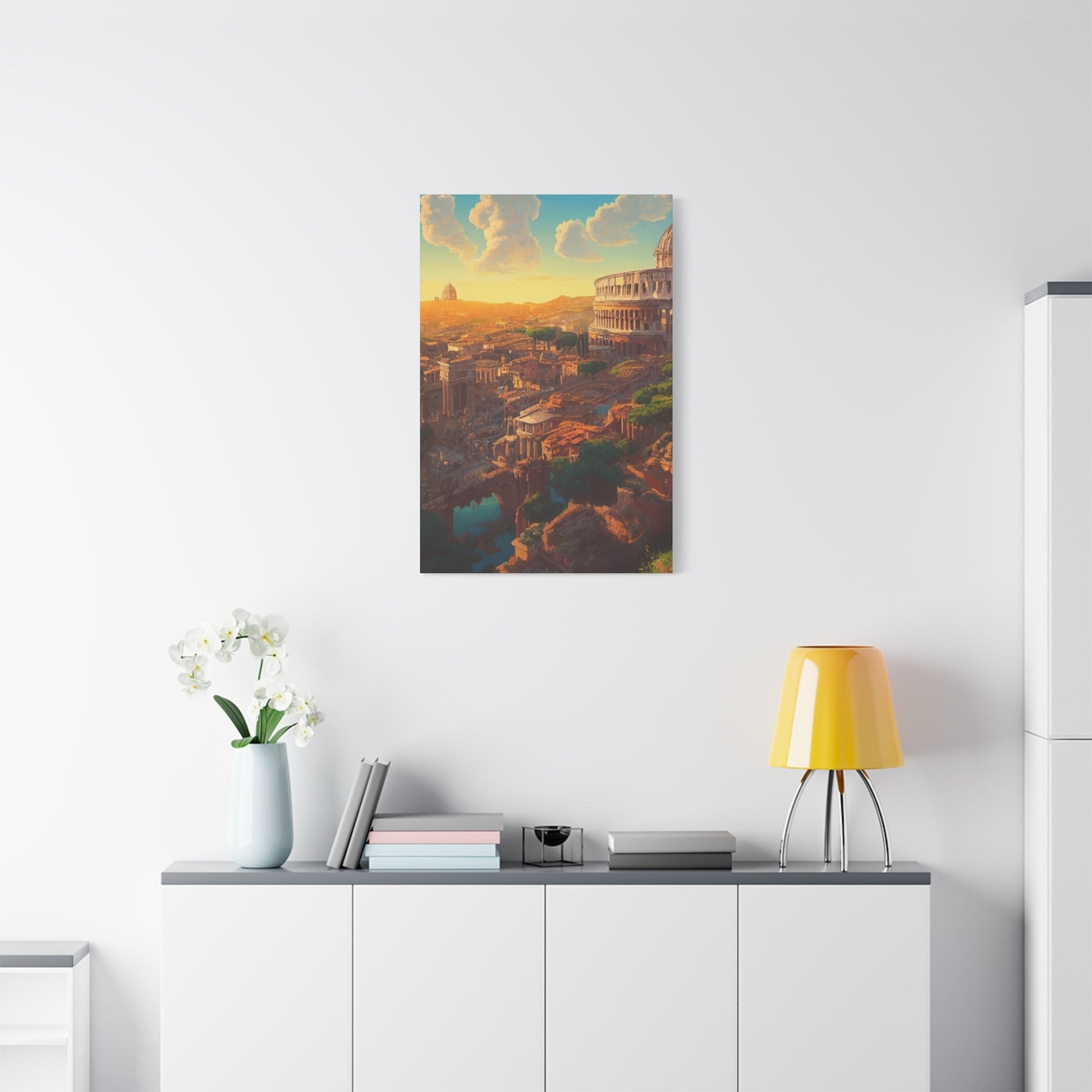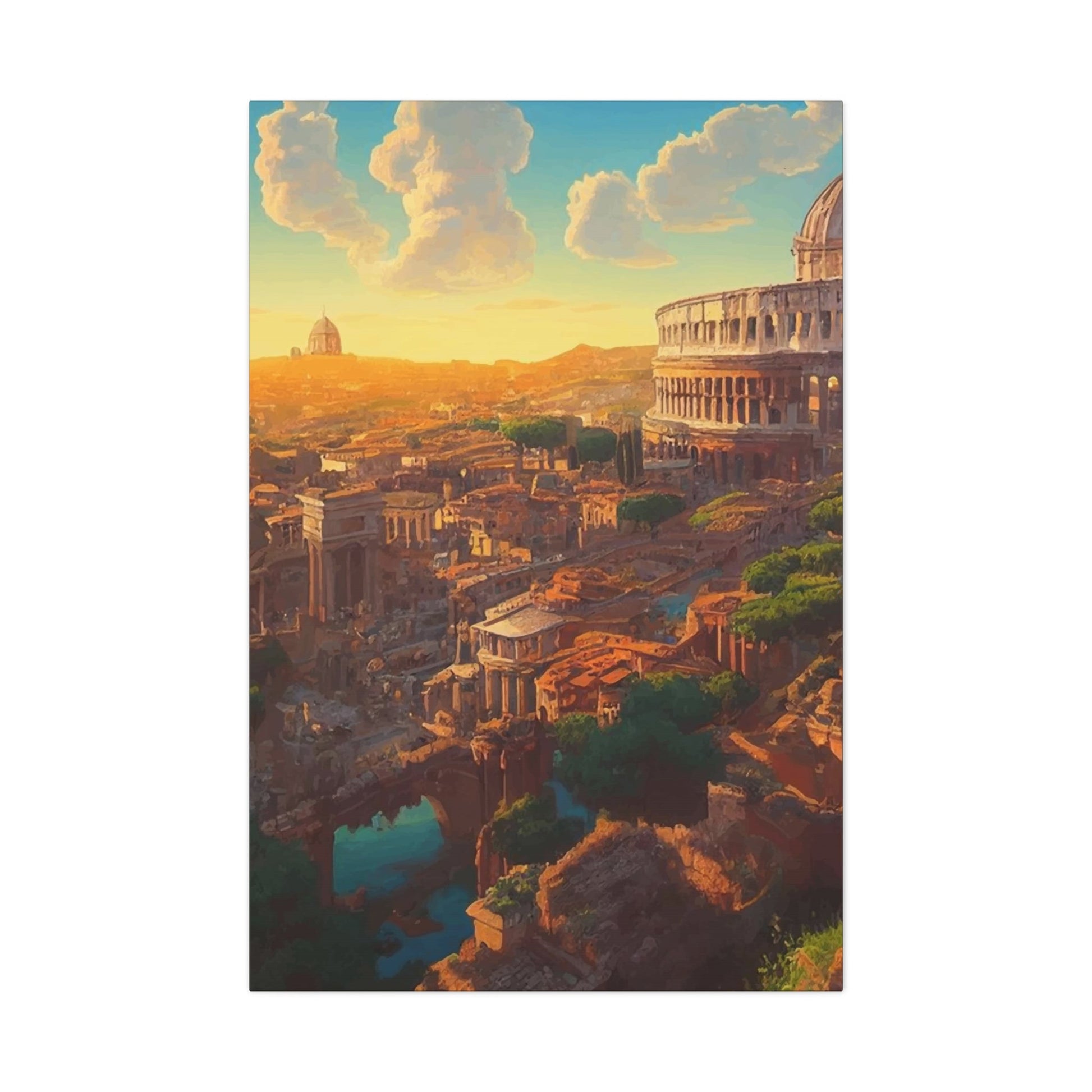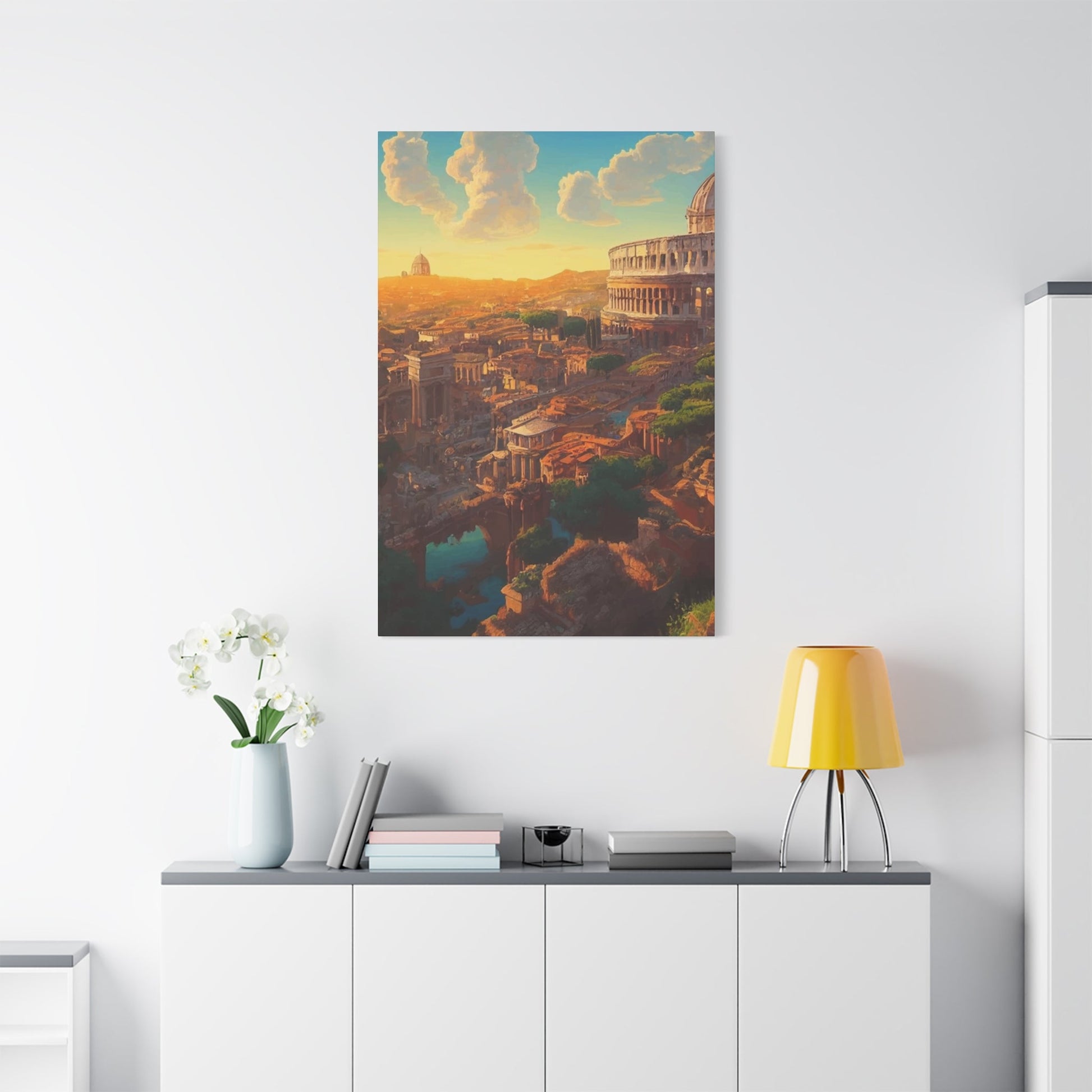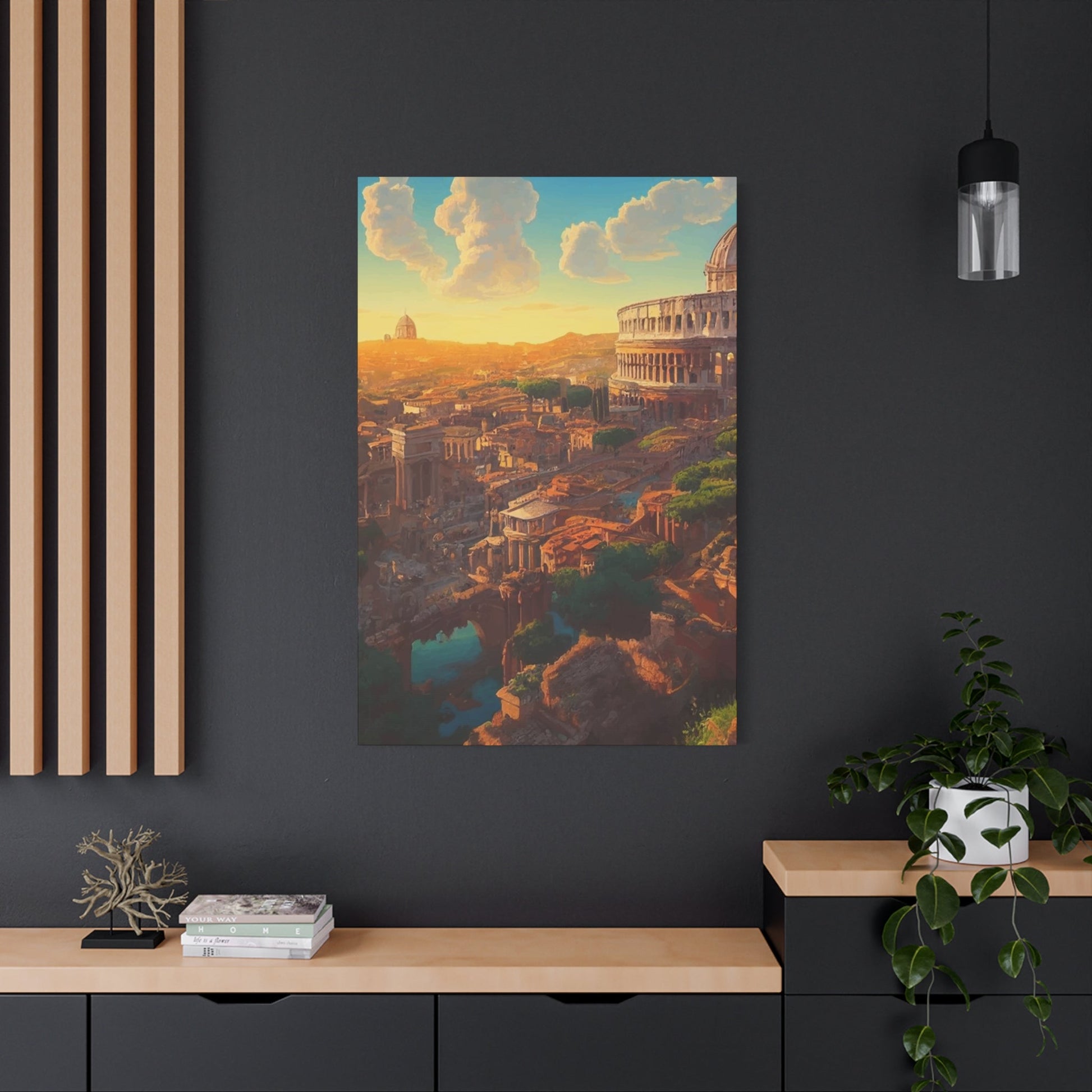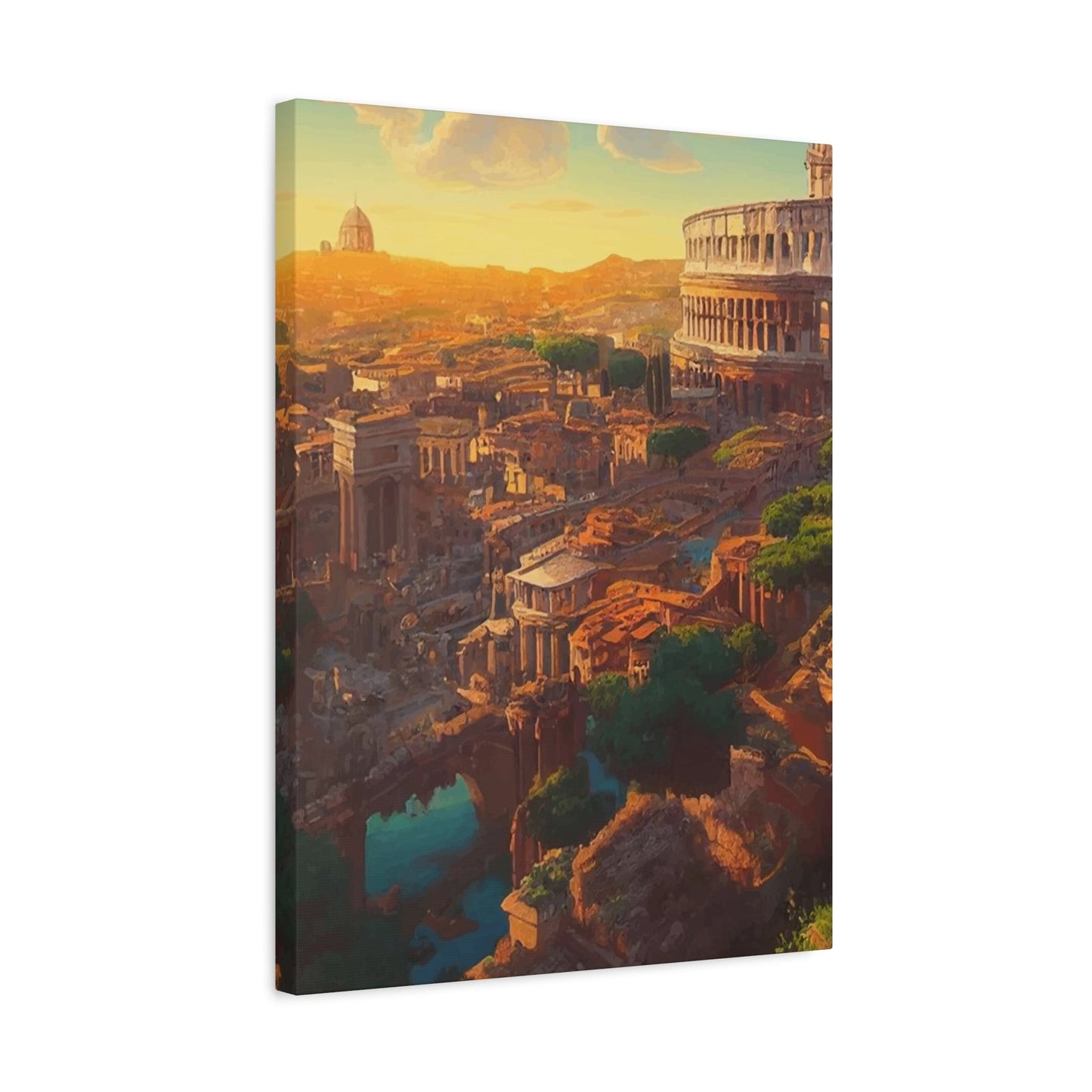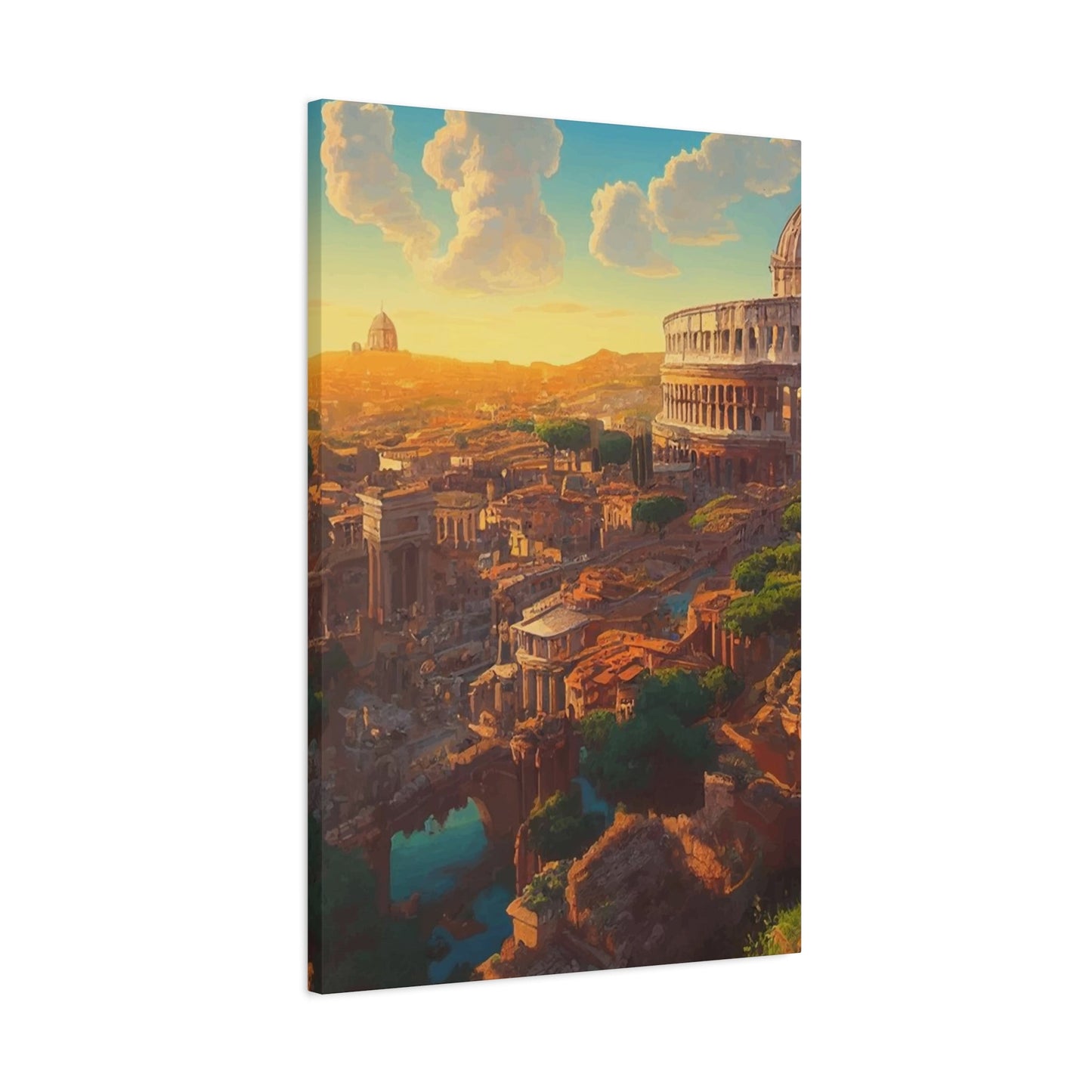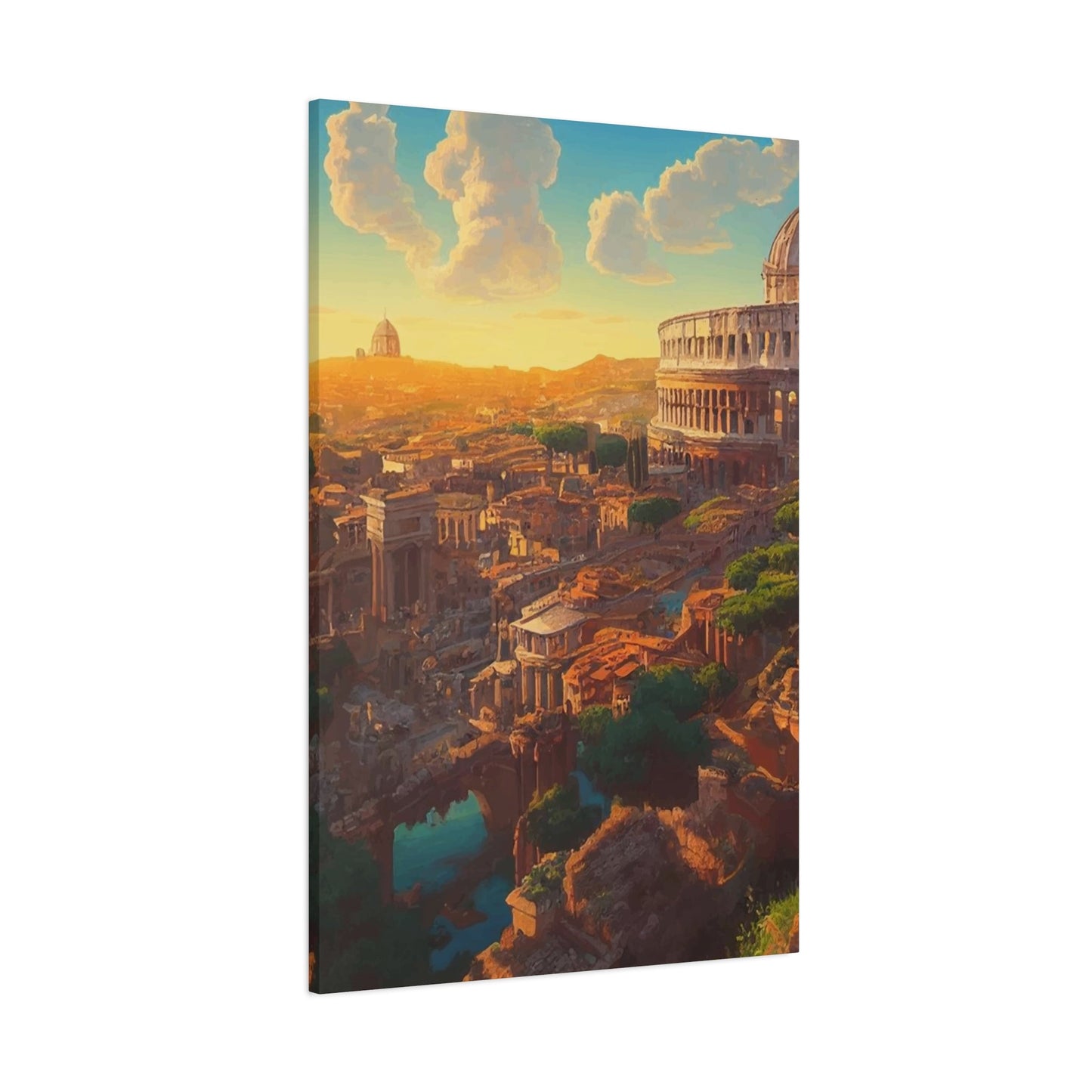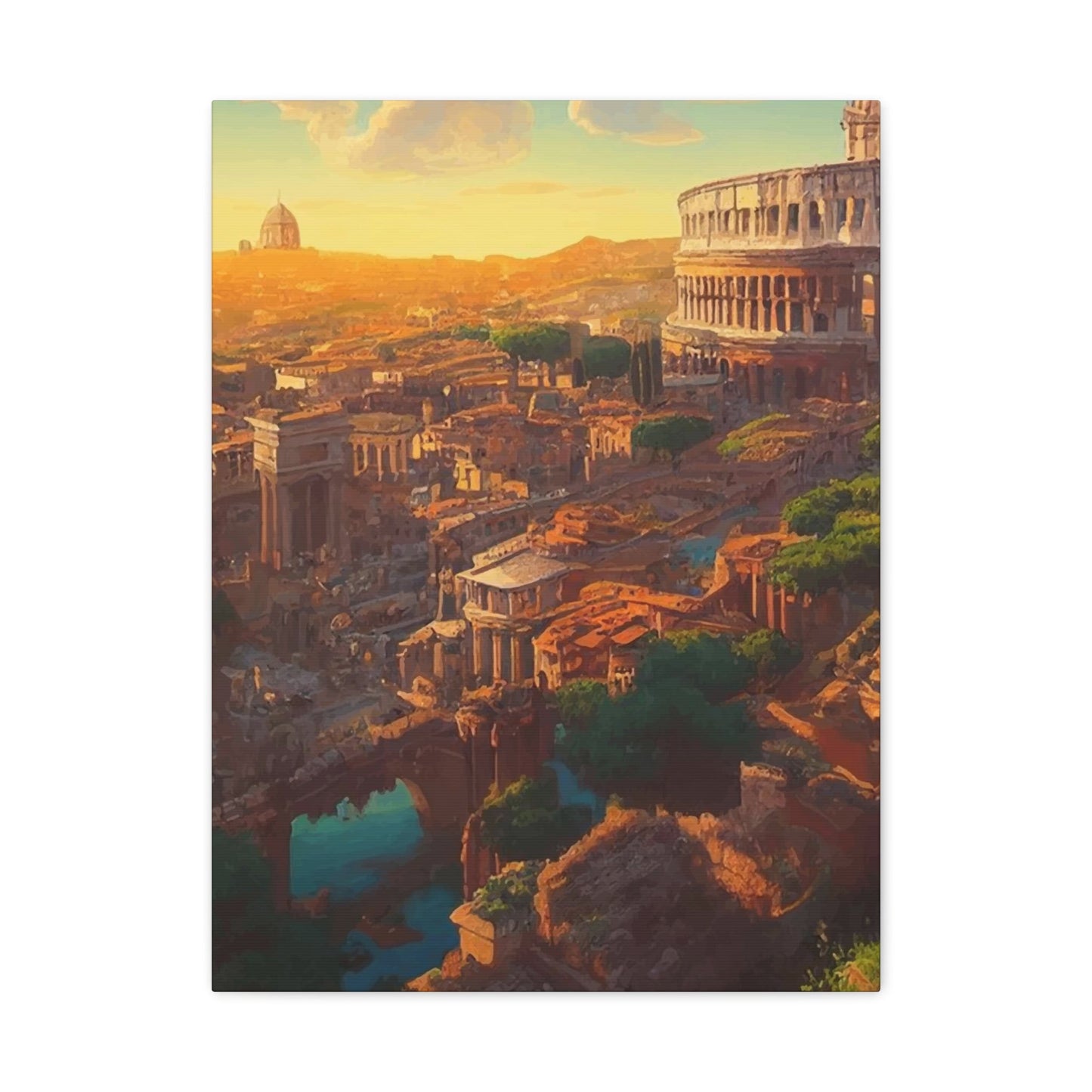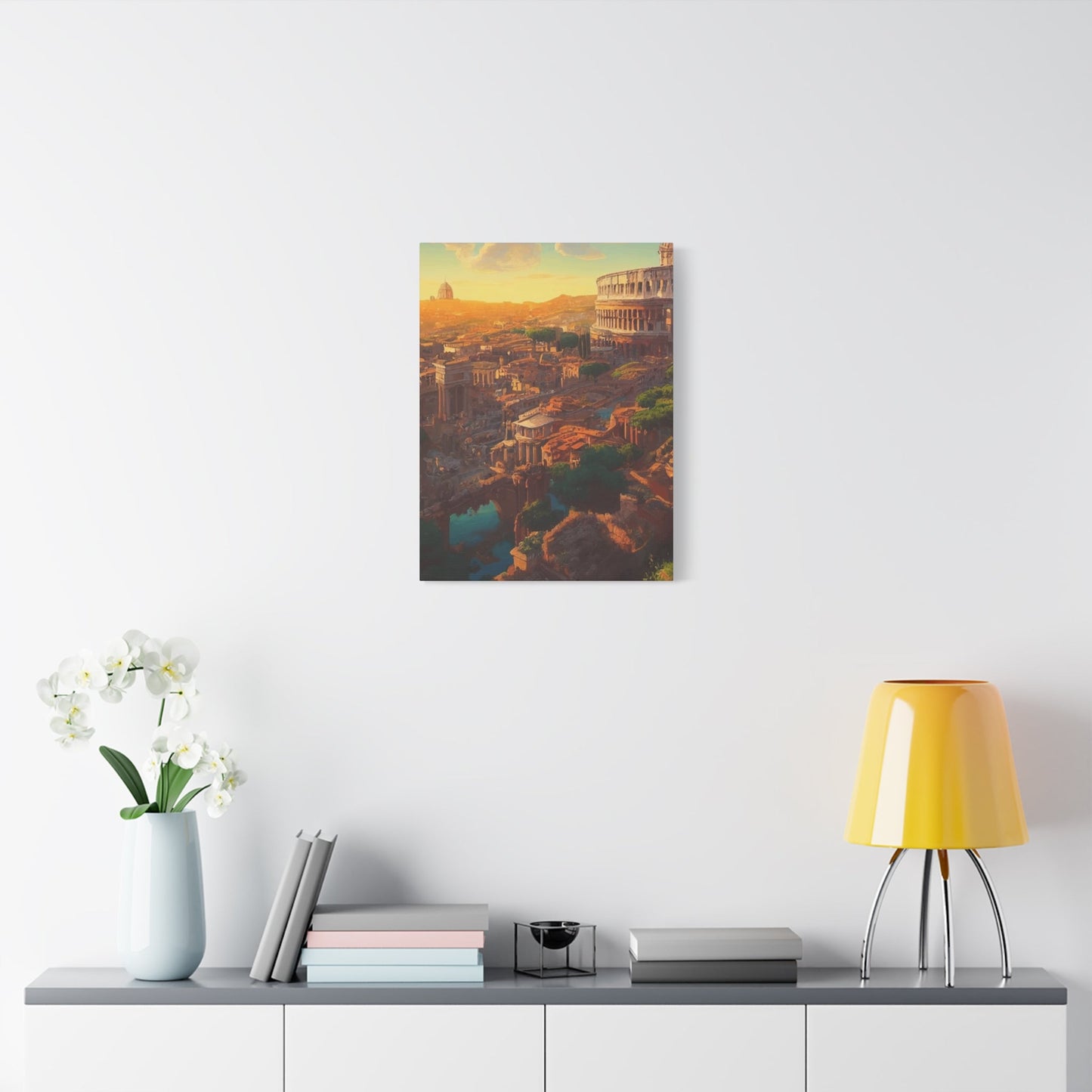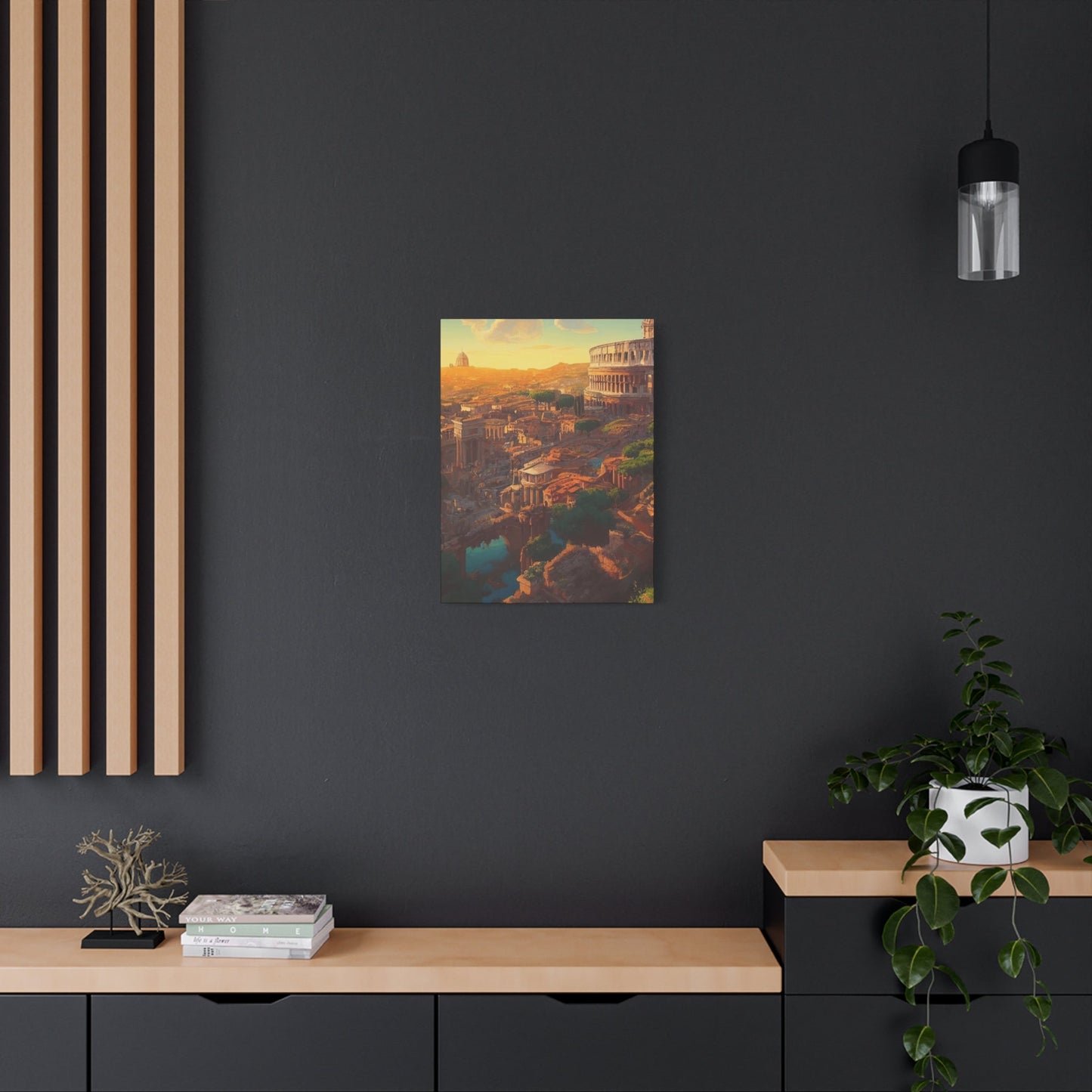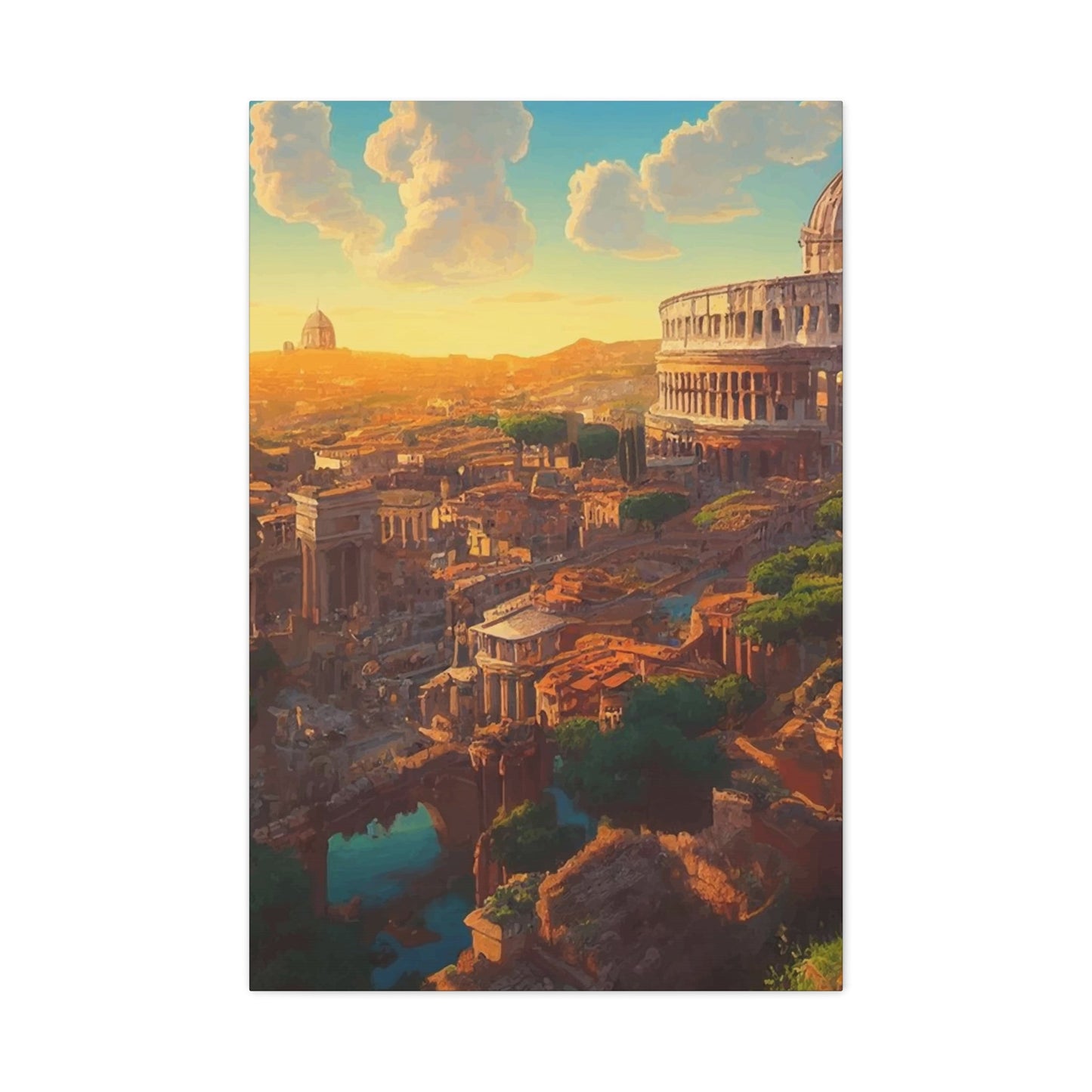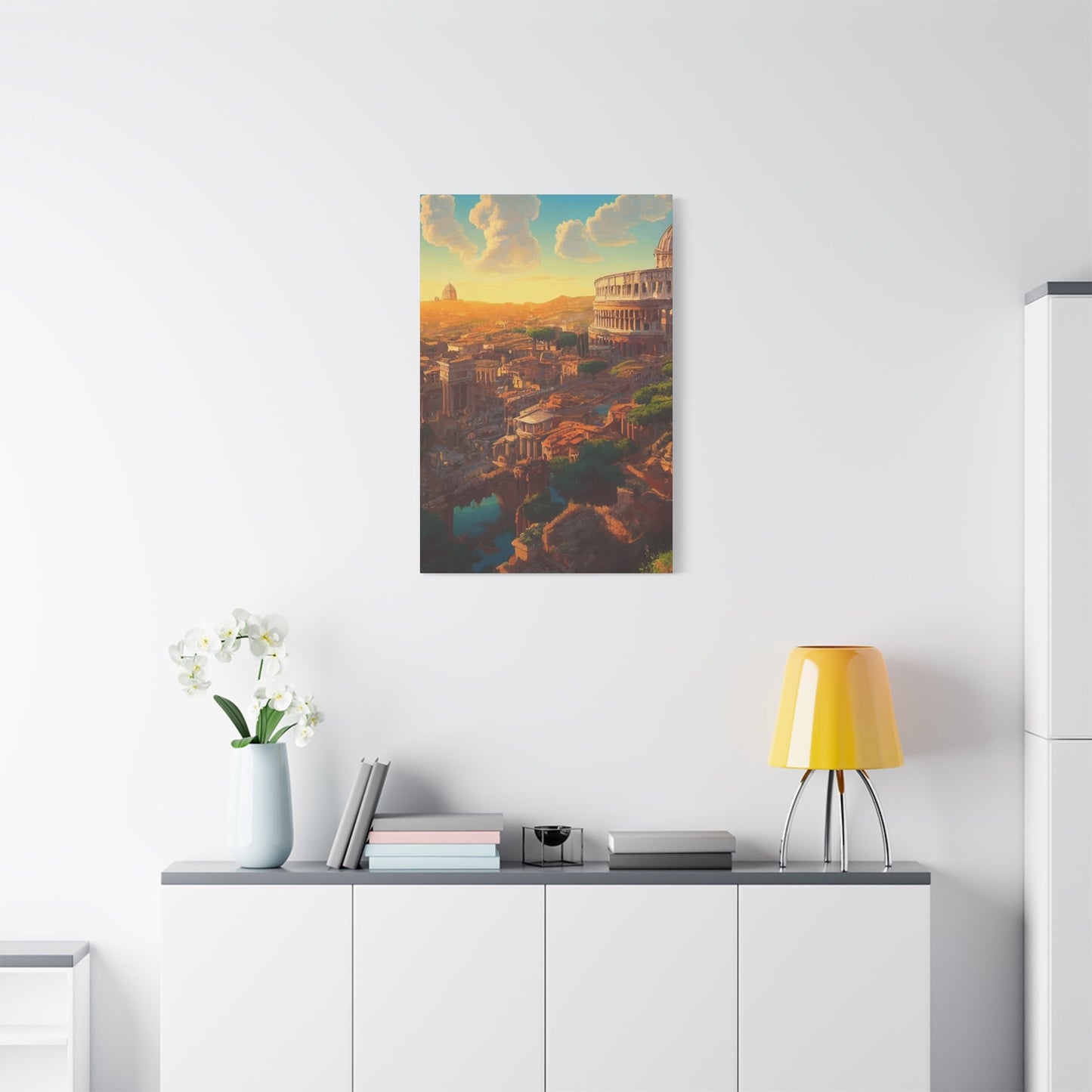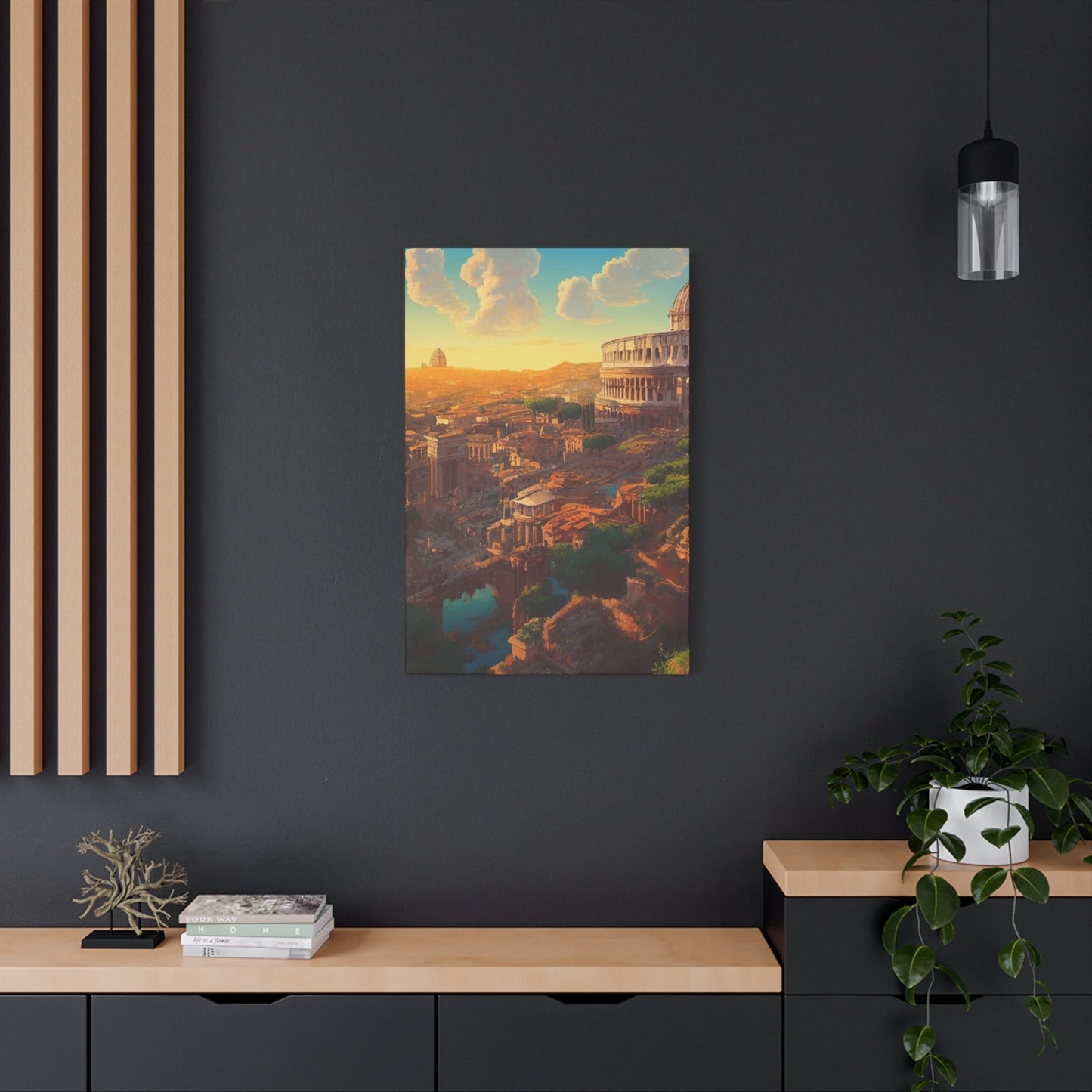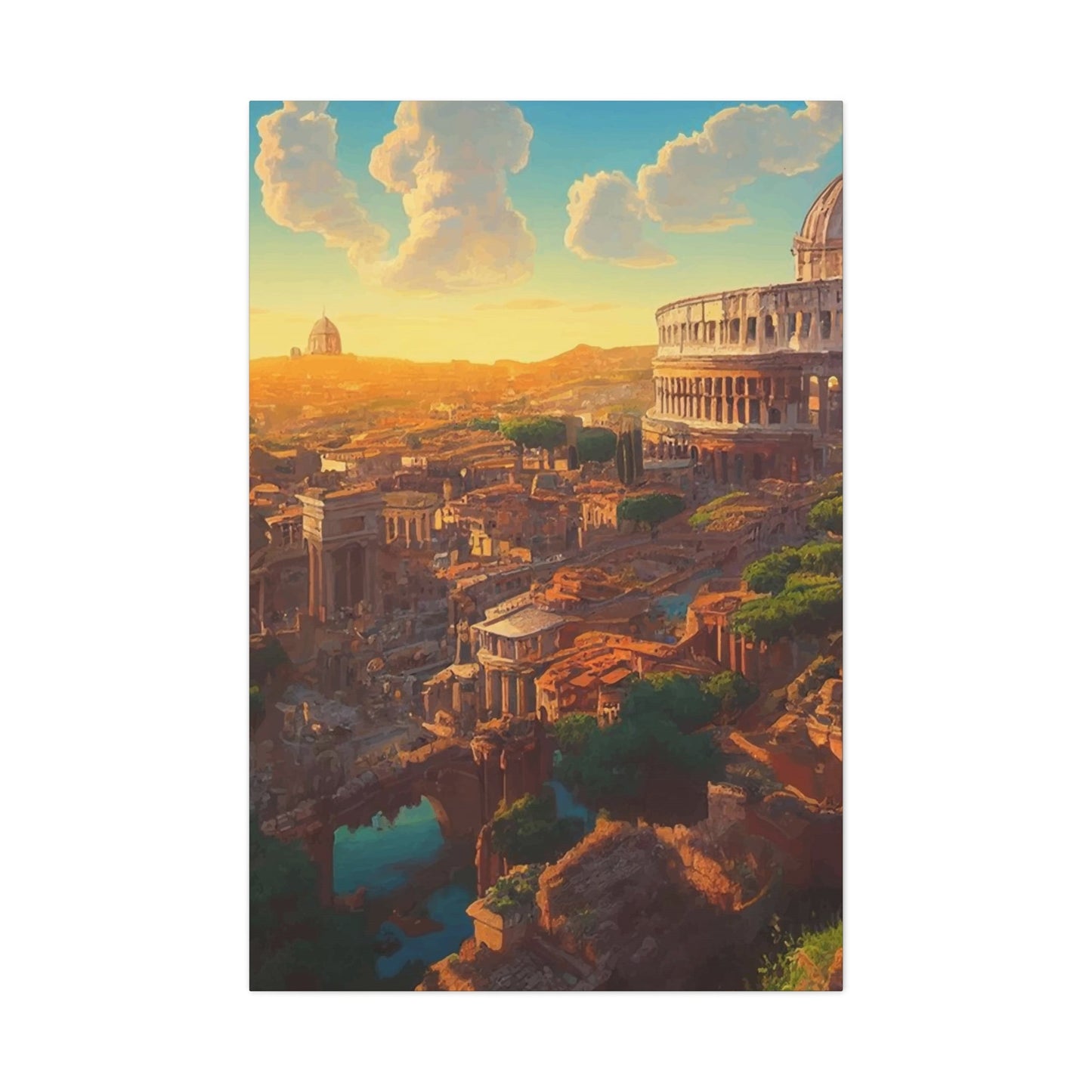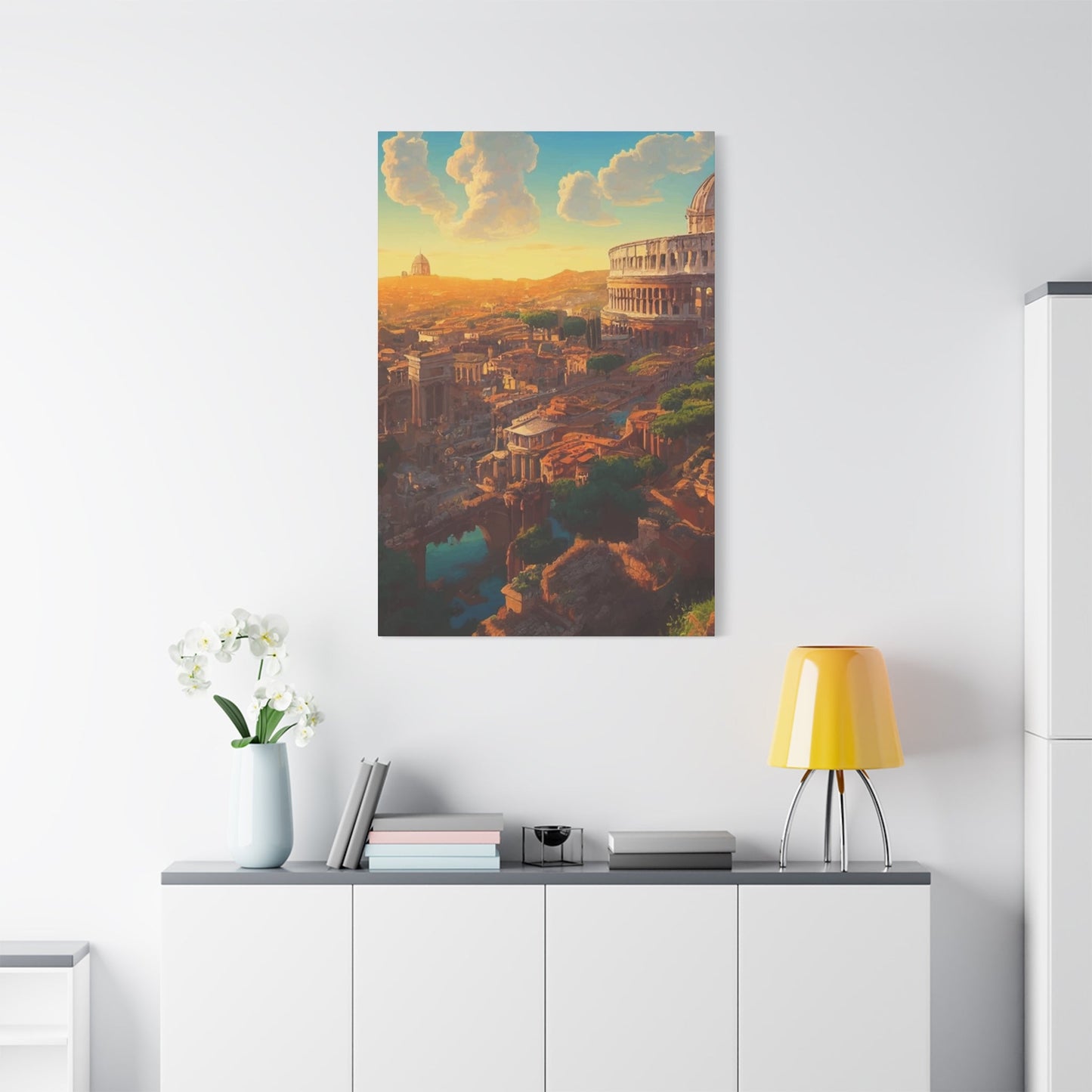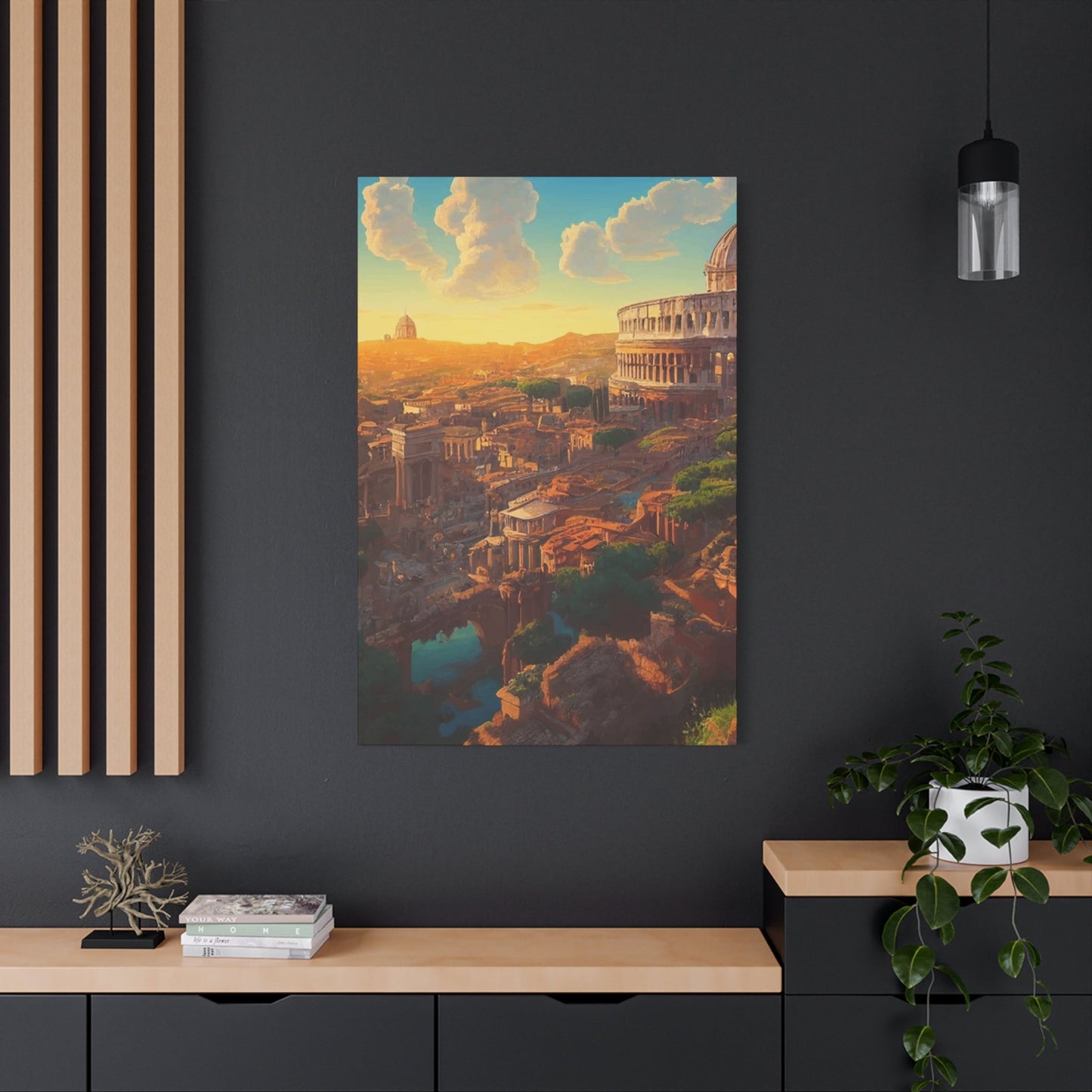Captivating Greece Wall Art: Transform Your Home with Mediterranean Beauty
Greece has long captivated hearts and minds with its breathtaking landscapes, rich cultural heritage, and timeless beauty. The allure of this Mediterranean paradise extends far beyond its physical borders, inspiring countless homeowners to bring elements of Greece charm into their living environments. Greece wall art offers an exceptional opportunity to infuse your home with the serene elegance and vibrant culture that defines this remarkable nation.
The art of decorating with Greece-inspired pieces goes beyond simple ornamentation; it represents a lifestyle choice that embraces tranquility, natural beauty, and cultural appreciation. Whether you're drawn to the iconic blue and white color palette that defines Greece architecture, the mystical allure of ancient mythology, or the stunning natural landscapes that make Greece a world-renowned destination, incorporating Greece wall art into your home creates an atmosphere of sophisticated elegance and Mediterranean warmth.
Contemporary homeowners increasingly seek ways to create environments that reflect their personal experiences, aspirations, and aesthetic preferences. Greece wall art provides an ideal solution for those who wish to celebrate the beauty of Mediterranean culture while creating visually stunning focal points throughout their homes. From dramatic sunset scenes over Santorini to minimalist representations of Greece architectural elements, the variety of available options ensures that every taste and style preference can be accommodated.
The psychological benefits of surrounding yourself with beautiful, culturally significant artwork cannot be overstated. Greece wall art has the unique ability to transport viewers to a different time and place, evoking feelings of peace, wanderlust, and appreciation for natural beauty. This transformative quality makes such pieces particularly valuable for creating relaxing environments that serve as personal retreats from the stresses of modern life.
Santorini Sunsets: The Crown Jewel of Greece Wall Art
Santorini sunsets represent perhaps the most iconic and sought-after subject matter in Greece wall art collections. These magnificent displays of natural beauty have inspired artists for generations, creating a rich tradition of sunset-themed artwork that continues to evolve with contemporary artistic techniques and perspectives. The dramatic interplay of colors, light, and architectural elements that characterizes Santorini sunsets provides endless inspiration for artists and decorators alike.
The unique geographical position of Santorini creates sunset conditions that are truly unparalleled anywhere else in the world. The island's elevated position above the Aegean Sea, combined with its distinctive volcanic landscape, creates a natural amphitheater for one of nature's most spectacular daily performances. Artists who specialize in Santorini sunset scenes understand how to capture not just the visual elements of these moments, but also the emotional resonance that makes them so universally appealing.
When selecting Santorini sunset wall art for your home, consider how the warm color palette will interact with your existing decor. The typical range of colors found in these pieces includes deep oranges, vibrant reds, soft pinks, and golden yellows, all set against the distinctive blue and white architecture that defines Greece island communities. These warm tones create an immediate sense of comfort and elegance, making them ideal for living rooms, bedrooms, and dining areas where you want to establish a welcoming atmosphere.
The artistic techniques used to create Santorini sunset wall art vary considerably, from photorealistic oil paintings that capture every detail of the scene to more abstract interpretations that focus on the emotional impact of the colors and forms. Watercolor treatments often emphasize the flowing, dreamlike quality of the sky during sunset hours, while digital art and photography can capture the precise moment when light and shadow create the most dramatic visual effects.
Modern interpretations of Santorini sunsets often incorporate contemporary artistic elements while maintaining the essential beauty that makes these scenes so compelling. Some artists focus on minimalist representations that distill the sunset experience to its most essential elements, while others create highly detailed works that invite viewers to lose themselves in the intricacies of the scene. The choice between these approaches often depends on the overall aesthetic of your home and your personal preferences regarding artistic style.
The placement of Santorini sunset wall art within your home requires careful consideration of lighting conditions and viewing angles. These pieces are most effective when positioned where they can be viewed during different times of day, as changing natural light conditions will reveal different aspects of the artwork throughout the day. Consider placing such pieces in areas where you spend significant time relaxing or entertaining, as they serve as excellent conversation starters and sources of visual interest.
Large-scale Santorini sunset pieces can serve as dramatic focal points for entire rooms, while smaller works can be grouped together to create gallery walls that tell a more comprehensive story about Greece island life. The key to successful placement lies in understanding how the warm colors of the sunset will complement other elements in your room, from furniture selections to accent pieces and lighting fixtures.
Blue and White: The Timeless Color Palette of Greece Wall Decor
The distinctive blue and white color combination that characterizes Greece architecture and design has become synonymous with Mediterranean elegance and coastal sophistication. This iconic color palette extends naturally into wall art applications, where it serves as both a design element and a cultural symbol that instantly evokes the beauty and tranquility of Greece island life. Understanding how to effectively incorporate blue and white Greece wall art into your home requires appreciation for both the aesthetic and cultural significance of these colors.
The historical origins of the blue and white color scheme in Greece design trace back centuries, with practical and symbolic reasons contributing to its widespread adoption. The brilliant white paint traditionally used on Greece buildings served practical purposes, reflecting harsh sunlight and keeping buildings cool during hot Mediterranean summers. The blue accents, often seen in window frames, doors, and decorative elements, were believed to ward off evil spirits while also complementing the natural blue of the surrounding sea and sky.
Contemporary Greece wall art that features blue and white themes draws inspiration from this rich cultural tradition while adapting these classic colors to modern aesthetic sensibilities. Artists working in this color palette understand how to balance the crispness of white with various shades of blue, from deep navy tones that evoke the depths of the Aegean Sea to lighter azure shades that capture the clarity of Mediterranean skies on perfect summer days.
The versatility of blue and white Greece wall art makes it exceptionally well-suited for a wide range of decorating styles and room configurations. These colors work beautifully in coastal-themed rooms, where they reinforce the maritime atmosphere and create visual connections to the sea. However, they are equally effective in urban settings, where they provide a refreshing contrast to the often neutral color palettes found in contemporary city homes.
When incorporating blue and white Greece wall art into your decorating scheme, consider how these colors will interact with your existing furnishings and architectural elements. White walls provide an ideal backdrop for pieces that feature predominantly blue elements, while rooms with colored walls may benefit from artwork that emphasizes white elements to create visual balance and prevent the color scheme from becoming overwhelming.
The range of artistic styles available in blue and white Greece wall art ensures that every aesthetic preference can be accommodated. Traditional representational pieces might depict classic Greece architecture, fishing boats, or coastal scenes rendered in photorealistic detail. Abstract interpretations might focus on the geometric patterns found in Greece design elements, creating contemporary pieces that reference cultural traditions while fitting seamlessly into modern decorating schemes.
Mixing different shades and intensities of blue within a single room or gallery wall arrangement can create visual depth and interest while maintaining the cohesive color story that makes blue and white combinations so appealing. Consider combining pieces that feature navy blue with others that emphasize lighter blue tones, creating a layered color experience that reflects the natural variations found in Greece coastal environments.
The psychological impact of blue and white color combinations cannot be overlooked when selecting Greece wall art for your home. Blue is widely recognized for its calming properties, promoting feelings of peace and tranquility that make it ideal for bedrooms and relaxation areas. White contributes to this calming effect while also creating a sense of cleanliness and spaciousness that can make rooms feel larger and more open.
Seasonal considerations also play a role in the appeal of blue and white Greece wall art. These colors remain appealing throughout the year, but they are particularly effective during warmer months when their cooling visual properties provide a refreshing contrast to hot weather. During winter months, these same colors can evoke memories of warmer times and distant travels, serving as visual reminders of sunny Mediterranean days.
Ancient Greece Mythology: Bringing Timeless Stories to Your Walls
The rich tapestry of ancient Greece mythology provides an inexhaustible source of inspiration for wall art that combines cultural education with aesthetic beauty. Mythological themes in Greece wall art offer homeowners the opportunity to surround themselves with stories and symbols that have influenced Western culture for thousands of years. These pieces serve not only as decorative elements but also as conversation starters and sources of ongoing fascination for family members and guests.
The pantheon of Greece gods and goddesses offers artists countless opportunities to explore themes of power, beauty, wisdom, and human nature through visual representation. Zeus, the king of the gods, is often depicted in dramatic scenes that emphasize his control over thunder and lightning, creating artwork that brings dynamic energy to any room. Athena, goddess of wisdom and warfare, provides inspiration for pieces that combine intellectual depth with striking visual elements, making them particularly appropriate for home offices or study areas.
Poseidon, ruler of the seas, naturally fits into coastal-themed decorating schemes, while his domain over earthquakes and horses provides additional symbolic elements that can be incorporated into artistic representations. Apollo, associated with music, poetry, and the sun, offers opportunities for artwork that celebrates creativity and artistic expression, making such pieces ideal for creative individuals who want their homes to reflect their artistic interests.
The stories and adventures found in Greece mythology provide narrative elements that can be explored through sequential artwork or complex single pieces that tell complete stories. The journey of Odysseus, with its themes of adventure, perseverance, and homecoming, resonates particularly well with contemporary audiences and provides rich material for artistic interpretation. The tale of Perseus and Medusa offers dramatic visual elements that translate effectively into wall art, while the story of Pandora explores themes of curiosity and consequence that remain relevant today.
Modern artists working with mythological themes often bring contemporary perspectives to these ancient stories, creating pieces that speak to current audiences while maintaining respect for the original cultural context. Some artists focus on psychological interpretations of mythological figures, exploring how these ancient archetypes continue to influence human behavior and understanding. Others emphasize the visual drama inherent in mythological stories, creating pieces that capture the epic scope and emotional intensity that make these tales so enduring.
Abstract interpretations of Greece mythology can be particularly effective in contemporary home settings, where overtly classical representations might feel out of place. Artists might focus on symbolic elements associated with particular gods or goddesses, creating pieces that reference mythological themes without requiring detailed knowledge of specific stories. These approaches allow homeowners to enjoy the cultural richness of mythological themes while maintaining decorating schemes that feel current and sophisticated.
The educational value of mythological Greece wall art extends beyond mere decoration, providing opportunities for family discussions about literature, history, and cultural development. Children who grow up surrounded by mythological imagery often develop enhanced appreciation for classical literature and historical studies, while adults can enjoy rediscovering stories they may have encountered earlier in their education.
Color palettes in mythological wall art often reflect the dramatic nature of the stories being told. Rich, saturated colors like deep reds, royal purples, and golden yellows are commonly used to convey the power and majesty associated with divine figures. Earth tones might be employed to represent the mortal world, while ethereal blues and whites could symbolize the realm of the gods on Mount Olympus.
The scale and placement of mythological Greece wall art requires careful consideration of the dramatic impact these pieces often create. Large-scale mythological scenes work well as focal points in formal living areas or dining rooms, where their grand scale matches the significance of the subject matter. Smaller mythological pieces can be grouped together to create gallery walls that explore particular themes or tell related stories through visual narrative.
Famous Greece Islands: Celebrating Island Paradise Through Art
The Greece islands represent some of the most beautiful and culturally significant destinations in the world, each possessing unique characteristics that make them worthy subjects for artistic interpretation. Greece wall art featuring famous islands allows homeowners to celebrate specific locations that hold personal significance while creating visually stunning displays that capture the essence of Mediterranean island life. Each island offers distinct visual elements and cultural associations that can enhance different decorating themes and personal preferences.
Mykonos, known for its vibrant nightlife and distinctive windmills, provides inspiration for artwork that combines architectural elements with dynamic coastal scenes. The island's reputation as a sophisticated party destination translates into wall art that often emphasizes energy, movement, and celebration. The iconic windmills of Mykonos create instantly recognizable silhouettes that work beautifully in both realistic and abstract artistic interpretations, while the island's pristine beaches and crystal-clear waters offer opportunities for serene coastal scenes.
Crete, the largest of the Greece islands, offers artists a wealth of subject matter ranging from ancient Minoan ruins to dramatic mountainous landscapes. The island's rich archaeological heritage provides opportunities for artwork that combines natural beauty with historical significance, making such pieces particularly appealing to homeowners who appreciate cultural depth alongside aesthetic beauty. The diverse geography of Crete, from coastal plains to mountain peaks, ensures that artistic interpretations can vary widely while maintaining authentic connection to the island's character.
Rhodes, with its medieval architecture and strategic position between Europe and Asia, offers unique opportunities for artwork that explores the intersection of different cultural influences. The island's famous Colossus, one of the Seven Wonders of the Ancient World, provides dramatic subject matter for large-scale artistic interpretations, while the well-preserved medieval city creates opportunities for architectural studies that emphasize historical continuity and cultural preservation.
Corfu, known for its lush vegetation and Venetian architectural influences, provides inspiration for artwork that emphasizes natural abundance and cultural sophistication. The island's unique position in the Ionian Sea creates different atmospheric conditions than those found in the Aegean, resulting in artistic interpretations that might emphasize greener color palettes and different lighting effects than those associated with other Greece islands.
The smaller, less commercially developed islands of Greece offer opportunities for artwork that emphasizes authenticity and traditional island life. Islands like Sifnos, Folegandros, and Amorgos provide subject matter for pieces that celebrate the simplicity and timeless beauty of traditional Greece island communities. These locations often inspire artwork that focuses on fishing boats, traditional architecture, and the peaceful rhythms of island life that continue largely unchanged despite modern developments.
Contemporary artistic interpretations of Greece islands often focus on capturing the emotional experience of visiting these locations rather than merely documenting their physical appearance. Some artists emphasize the sense of escape and relaxation that island visits provide, creating pieces that evoke feelings of vacation and retreat. Others focus on the dramatic natural beauty that makes these locations so photographically popular, emphasizing the interplay of light, water, and landscape that creates such memorable visual experiences.
The seasonal variations that characterize Greece island life provide additional opportunities for artistic exploration. Summer scenes might emphasize the brilliant light and intense blues that define peak tourist season, while spring artwork could focus on wildflowers and the gentler colors that characterize shoulder seasons. Winter interpretations, though less common, can capture the raw beauty and dramatic weather conditions that reveal different aspects of island character.
Photography-based Greece wall art featuring famous islands offers opportunities to capture specific moments and locations with documentary precision. High-quality photographic prints can preserve the exact colors, lighting conditions, and atmospheric effects that make particular island locations so memorable. These pieces work particularly well for homeowners who have visited specific islands and want to preserve memories of their experiences.
Artistic techniques for island-themed Greece wall art range from highly detailed realistic representations to impressionistic interpretations that focus on capturing the overall mood and atmosphere of island life. Watercolor techniques often work particularly well for island subjects, as the flowing nature of the medium complements the fluid boundaries between sea and sky that characterize island environments.
Coastal Vibes: Creating Mediterranean Atmosphere with Greece-Inspired Prints
The concept of coastal living extends far beyond mere proximity to the ocean; it represents a lifestyle philosophy that emphasizes relaxation, natural beauty, and connection to maritime environments. Greece-inspired wall prints that capture coastal themes provide an excellent way to bring this sophisticated approach to coastal living into homes regardless of their actual location. The unique characteristics of Greece coastal environments offer distinct advantages over generic coastal themes, providing cultural depth alongside natural beauty.
Greece coastal scenes possess qualities that distinguish them from other Mediterranean coastal regions, primarily due to the distinctive architecture, unique geological formations, and specific cultural elements that define Greece seaside communities. The dramatic cliffs of Santorini create opportunities for artwork that emphasizes vertical elements and spectacular views, while the gentler coastlines of islands like Paros offer subjects that focus on horizontal expanses and peaceful beach scenes.
The integration of human elements into natural coastal scenes represents one of the most appealing aspects of Greece-inspired coastal wall art. Unlike purely natural coastal scenes, Greece coastal artwork often includes traditional fishing boats, seaside tavernas, coastal pathways, and architectural elements that speak to centuries of human interaction with maritime environments. These cultural elements add layers of meaning and interest that purely natural scenes might lack.
Color palettes in Greece coastal wall art tend to emphasize the clarity and intensity of Mediterranean light, which differs significantly from the softer, more diffused light found in northern coastal regions. Artists working with Greece coastal themes often employ more saturated blues and more brilliant whites than might be found in coastal artwork from other regions. These intense colors reflect the reality of Mediterranean lighting conditions while creating artwork that brings energy and vitality to home environments.
The variety of coastal environments found throughout Greece provides artists and homeowners with numerous options for creating coastal-themed decorating schemes. Rocky coastlines with dramatic cliff formations offer opportunities for artwork that emphasizes power and permanence, while sandy beaches with gentle waves provide subjects for pieces that emphasize tranquility and relaxation. Fishing harbors and marinas offer opportunities for artwork that celebrates the working relationship between humans and the sea.
Seasonal variations in Greece coastal environments provide additional opportunities for creating diverse coastal-themed art collections. Summer coastal scenes might emphasize the brilliant blues and intense light that characterize peak season conditions, while spring and autumn interpretations could focus on the more subtle colors and atmospheric conditions that define shoulder seasons. These seasonal variations allow homeowners to create rotating displays that reflect changing conditions throughout the year.
The psychological benefits of coastal-themed Greece wall art extend beyond mere aesthetic pleasure. Research has consistently shown that images of water and coastal environments have calming effects that can reduce stress and promote relaxation. The addition of cultural elements found in Greece coastal scenes adds intellectual interest that can enhance these psychological benefits by providing ongoing sources of visual discovery and cultural appreciation.
Contemporary approaches to Greece coastal wall art often emphasize environmental themes that resonate with current concerns about ocean conservation and sustainable tourism. Artists might focus on the pristine beauty of less developed coastal areas, creating pieces that celebrate natural preservation while documenting environments that face increasing pressure from development and climate change.
The integration of Greece coastal wall art into existing decorating schemes requires careful consideration of scale, color relationships, and thematic consistency. Large coastal scenes work effectively as focal points in living areas where their expansive nature can be properly appreciated. Smaller coastal pieces can be grouped together to create gallery walls that explore different aspects of coastal life or document various coastal locations throughout Greece.
Abstract interpretations of Greece coastal themes offer opportunities for homeowners who prefer contemporary decorating approaches while still wanting to reference coastal living concepts. These pieces might focus on color relationships that evoke coastal environments without literally depicting specific locations, or they might emphasize textural elements that reference the interaction between water and land without requiring representational accuracy.
Iconic Greece Architecture: Structural Beauty as Artistic Inspiration
The architectural heritage of Greece represents one of humanity's greatest achievements in structural design and aesthetic beauty. Greece architectural elements have influenced building design throughout the Western world for over two thousand years, and this enduring appeal translates naturally into wall art applications. Greece wall art featuring architectural themes allows homeowners to celebrate classical design principles while creating sophisticated decorating schemes that emphasize proportion, symmetry, and timeless elegance.
The Parthenon, perhaps the most recognizable structure in all of Greece architecture, provides inspiration for wall art that emphasizes perfect proportions and mathematical precision. Artists interpreting the Parthenon for contemporary audiences might focus on the play of light and shadow across its columns, the relationship between the structure and its natural setting, or the details of its sculptural decorations. These different approaches allow homeowners to find Parthenon-inspired artwork that matches their specific aesthetic preferences and decorating requirements.
The distinctive columns that characterize classical Greece architecture offer particularly rich opportunities for artistic interpretation. The three classical orders—Doric, Ionic, and Corinthian—each possess unique characteristics that can be emphasized in artistic representations. Doric columns, with their simple, powerful forms, translate effectively into minimalist contemporary artwork. Ionic columns, with their distinctive scrolled capitals, provide opportunities for pieces that emphasize decorative elements and historical craftsmanship. Corinthian columns, with their elaborate acanthus leaf decorations, inspire artwork that celebrates ornamental complexity and artistic skill.
Greece temple architecture provides subject matter for wall art that explores themes of permanence, spirituality, and cultural continuity. These structures, many of which have survived for thousands of years, represent humanity's desire to create lasting monuments to cultural and religious values. Artistic interpretations of Greece temples might emphasize their relationship to natural landscapes, their mathematical precision, or their role as cultural symbols that continue to influence contemporary design.
The integration of Greece architectural elements into contemporary wall art often involves abstraction and reinterpretation that makes classical elements accessible to modern audiences. Artists might isolate particular architectural details—the curve of an arch, the proportion of a column, the geometry of a pediment—and present these elements in ways that emphasize their inherent beauty while removing them from their original historical context.
Byzantine architecture, which represents the evolution of Greece building traditions during the Christian era, provides additional opportunities for architectural wall art that explores religious themes and decorative complexity. The distinctive domes and elaborate mosaic decorations found in Byzantine structures translate effectively into artwork that emphasizes color, pattern, and spiritual symbolism.
Traditional Greece island architecture, with its distinctive white-washed walls and blue accents, offers opportunities for artwork that celebrates vernacular building traditions alongside the more famous classical monuments. These simpler architectural forms often work better in contemporary home settings, where their human scale and functional design create more approachable and livable references than the monumental scale of classical temples.
Modern architectural photography of Greece structures provides opportunities for wall art that documents these buildings as they exist today, often incorporating the effects of time, weather, and ongoing conservation efforts. These photographic approaches can capture details and perspectives that might not be accessible to casual visitors, while also documenting the ongoing relevance of these structures in contemporary Greece life.
The educational value of architectural Greece wall art extends beyond aesthetic appreciation to include understanding of engineering principles, historical development, and cultural values. Homeowners who display architectural artwork often find themselves learning about construction techniques, historical periods, and cultural influences that shaped the development of Western civilization.
Color considerations in architectural Greece wall art often emphasize the natural materials used in classical construction—the warm tones of marble, the earth colors of clay roof tiles, and the brilliant whites of limestone and plaster. These natural color palettes work exceptionally well in contemporary homes where they provide warmth and authenticity without overwhelming modern decorating schemes.
The placement of architectural Greece wall art requires consideration of the formal qualities inherent in classical design. These pieces often work best in settings where their structural emphasis can be properly appreciated—formal dining rooms, entrance halls, or study areas where their sophisticated character matches the dignity of the room's function.
Olive Trees and Natural Elements: Celebrating Greece Landscape Through Art
The olive tree holds special significance in Greece culture, symbolizing peace, wisdom, and abundance while serving as a practical source of sustenance and economic stability for countless generations. Greece wall art featuring olive trees and other natural elements provides homeowners with opportunities to celebrate both the natural beauty of the Greece landscape and the cultural significance of these enduring symbols. The artistic interpretation of olive trees and Mediterranean vegetation offers unique advantages for creating warm, organic decorating schemes that connect interior environments with natural beauty.
The distinctive silhouette of mature olive trees, with their gnarled trunks and silvery-green foliage, provides instantly recognizable imagery that evokes Mediterranean climates and traditional agricultural practices. Artists working with olive tree subjects can explore numerous approaches, from detailed botanical studies that emphasize the unique characteristics of individual trees to landscape compositions that show olive groves as integral elements of the Greece countryside.
The seasonal changes that affect olive trees provide opportunities for artwork that explores different aspects of their character throughout the year. Spring olive tree scenes might emphasize new growth and flowering, while summer interpretations could focus on the full, mature foliage that provides crucial shade during hot Mediterranean months. Autumn artwork might celebrate the harvest season, when olives are gathered using traditional methods that have remained largely unchanged for centuries.
Ancient olive trees, some of which are hundreds or even thousands of years old, provide particularly compelling subjects for wall art that explores themes of permanence, resilience, and cultural continuity. These venerable trees have witnessed countless historical events and continue to produce fruit despite their great age, making them powerful symbols of endurance and renewal that resonate with contemporary audiences seeking connection to natural cycles and traditional values.
The integration of olive trees into broader landscape compositions allows artists to explore the relationship between human cultivation and natural beauty that characterizes much of the Greece countryside. Olive groves, often terraced on hillsides to prevent erosion and maximize growing space, create geometric patterns that combine functional agriculture with aesthetic beauty. These human-modified landscapes represent thousands of years of careful stewardship and provide opportunities for artwork that celebrates sustainable agricultural practices.
Other natural elements commonly found in Greece landscapes provide additional opportunities for nature-themed wall art. Mediterranean herbs like rosemary, thyme, and oregano offer subjects for detailed botanical artwork that could work well in kitchen or dining room settings. Wild flowers that bloom throughout the Greece countryside during spring months provide colorful subjects that can brighten any room while celebrating the seasonal abundance of Mediterranean climates.
The distinctive geology of Greece, with its limestone cliffs, volcanic islands, and marble outcroppings, provides dramatic subjects for landscape artwork that emphasizes the raw power and ancient history embedded in the physical environment. These geological elements often serve as backdrops for vegetation-focused artwork, creating compositions that explore the relationship between living and mineral elements of the landscape.
Water features in Greece natural environments—mountain streams, coastal springs, and ancient wells—provide opportunities for artwork that combines natural beauty with cultural history. Many of these water sources have been used by local communities for thousands of years, creating locations where natural beauty and human history intersect in meaningful ways.
Contemporary environmental concerns add additional relevance to nature-themed Greece wall art, as these pieces can serve as reminders of the importance of environmental conservation and sustainable living practices. Olive trees, in particular, represent agricultural methods that have proven sustainable over thousands of years, offering examples of how human needs can be met without destroying natural ecosystems.
The color palettes associated with Greece natural elements tend to emphasize earth tones and the distinctive colors of Mediterranean vegetation. The silvery greens of olive foliage, the deep greens of cypress trees, and the varied colors of wildflowers create natural color schemes that work beautifully in contemporary homes while maintaining authentic connections to Greece landscapes.
Abstract interpretations of natural Greece elements can provide contemporary approaches to nature-themed decorating that maintains cultural authenticity while fitting seamlessly into modern home environments. Artists might focus on the patterns created by olive tree branches, the textures of tree bark, or the color relationships found in Mediterranean vegetation, creating pieces that reference natural elements without requiring literal representation.
Minimalist Approaches to Greece Wall Art
The principles of minimalist design, with their emphasis on simplicity, clean lines, and uncluttered aesthetics, might initially seem incompatible with the rich cultural heritage and ornate decorative traditions associated with Greece art. However, contemporary artists have discovered numerous ways to distill the essence of Greece culture and natural beauty into minimalist wall art that maintains cultural authenticity while fitting seamlessly into modern home environments that favor simplicity over elaboration.
Minimalist Greece wall art often focuses on isolating single elements from complex cultural or natural scenes, presenting these elements in ways that emphasize their essential characteristics without unnecessary decorative embellishment. A single Doric column, rendered in simple lines against a neutral background, can convey the power and elegance of classical architecture more effectively than a complex architectural scene filled with multiple elements competing for attention.
The distinctive color palette associated with Greece culture—particularly the iconic blue and white combination—lends itself naturally to minimalist interpretation. Simple compositions that explore the relationship between these two colors, perhaps through geometric patterns inspired by Greece architectural details or abstract representations of sky and sea, can create powerful visual statements that celebrate Greece aesthetics while maintaining contemporary sophistication.
Typography and symbolic elements from Greece culture provide additional opportunities for minimalist wall art that maintains cultural authenticity. Greece letters, whether presented individually or in meaningful combinations, can create sophisticated artwork that appeals to viewers with classical education while remaining accessible to contemporary audiences. Ancient Greece symbols, simplified and presented in clean, modern formats, can serve similar functions.
The geometric patterns found throughout Greece decorative arts translate particularly well into minimalist artistic interpretations. The meander pattern, ancient Greece key designs, and other traditional geometric motifs can be abstracted and simplified to create contemporary artwork that references classical design traditions while maintaining the clean aesthetic lines that characterize minimalist design approaches.
Silhouette-based approaches to minimalist Greece wall art can capture the essential forms of recognizable Greece elements while eliminating distracting details. The distinctive outline of a Greece temple, the profile of an amphora, or the silhouette of an olive tree can create immediately recognizable imagery that celebrates Greece culture without requiring complex artistic execution or detailed representation.
Color field approaches to minimalist Greece art might focus on capturing the emotional essence of Greece experiences through carefully chosen color relationships rather than literal representation of specific subjects. The warm golden light of a Greece sunset, the cool blues of the Aegean Sea, or the earth tones of ancient stone structures can be explored through abstract color compositions that evoke these experiences without depicting them directly.
The integration of minimalist Greece wall art into contemporary decorating schemes requires careful attention to proportion, placement, and relationship with other design elements. These pieces often work best when given adequate visual breathing room, allowing their simplified forms and carefully chosen colors to make maximum impact without competition from surrounding decorative elements.
Modern printing and digital art techniques have made it possible to create minimalist Greece wall art that maintains high quality while remaining affordable for a wide range of budgets. Simple line drawings of Greece subjects, when produced as high-quality prints, can provide the same visual impact as more complex artistic works while fitting better into homes where decorative budgets or aesthetic preferences favor simpler approaches.
The educational value of minimalist Greece wall art often lies in its ability to encourage viewers to focus on essential elements of Greece culture and natural beauty. By stripping away unnecessary details, these pieces can help viewers develop deeper appreciation for the fundamental design principles and cultural values that make Greece aesthetics so enduringly appealing.
Seasonal rotation of minimalist Greece wall art can provide variety and interest while maintaining consistent aesthetic approaches. Simple compositions that reference different aspects of Greece life—summer beach scenes, autumn harvest imagery, spring wildflower themes—can be changed throughout the year while maintaining cohesive minimalist design principles.
The psychological benefits of minimalist Greece wall art include the calming effects associated with both minimalist design principles and Greece cultural associations. These pieces can provide visual rest and cultural enrichment simultaneously, creating artwork that serves multiple functions in contemporary living environments where simplicity and meaning are both highly valued.
Mediterranean Decor Integration: Harmonizing Greece Art with Regional Styles
The broader Mediterranean design aesthetic encompasses cultural influences from numerous countries surrounding the Mediterranean Sea, creating opportunities for decorating approaches that celebrate regional similarities while acknowledging cultural distinctions. Integrating Greece wall art with Mediterranean decor requires understanding both the shared characteristics that unite Mediterranean cultures and the specific elements that make Greece culture unique within this broader regional context.
The warm, sun-drenched color palettes that characterize Mediterranean design provide natural frameworks for incorporating Greece wall art into broader decorating schemes. Terracotta tones from Spanish and Italian traditions harmonize beautifully with the earth colors found in Greece natural landscapes, while the blues and whites that define Greece island architecture complement the ceramic traditions found throughout the Mediterranean region.
Natural materials that appear throughout Mediterranean cultures—stone, wood, ceramic, and metal—create unifying elements that allow Greece wall art to work seamlessly with decorative objects and architectural details from other Mediterranean traditions. A Greece landscape painting might be framed in weathered wood that references Spanish colonial traditions, while Greece pottery depicted in wall art could complement actual ceramic pieces from Italy or Morocco.
The emphasis on outdoor living and connection to natural environments that characterizes Mediterranean lifestyles provides thematic unity that allows Greece wall art to enhance decorating schemes that celebrate these shared values. Whether the specific cultural reference point is Greece island life, Spanish coastal living, or Italian countryside traditions, the underlying appreciation for natural beauty and relaxed living creates common ground for successful design integration.
Architectural elements that appear throughout Mediterranean cultures—arched doorways, terracotta roof tiles, and stucco walls—provide physical frameworks that enhance the display of Greece wall art while maintaining broader Mediterranean aesthetic consistency. Greece architectural artwork, whether depicting classical columns or traditional island buildings, naturally complements these architectural elements while adding cultural specificity to broadly Mediterranean decorating approaches.
The integration of textile patterns and colors from various Mediterranean traditions can create rich, layered decorating schemes that accommodate Greece wall art while celebrating the diversity of regional cultures. Turkish rugs, Spanish ceramics, Italian fabrics, and Moroccan metalwork can all coexist successfully with Greece wall art when unified by shared color palettes and design principles that emphasize warmth, craftsmanship, and cultural authenticity.
Contemporary Mediterranean decorating often emphasizes the blend of traditional elements with modern conveniences and aesthetic preferences. Greece wall art fits naturally into these evolved decorating approaches, providing cultural depth and historical connection while maintaining the sophistication and livability that contemporary homeowners require.
The seasonal rhythms that characterize Mediterranean life—long, warm summers followed by mild winters—influence decorating approaches throughout the region and provide natural opportunities for rotating Greece wall art displays. Summer months might emphasize coastal Greece scenes and bright blues and whites, while winter displays could focus on warmer interior scenes and earth tones that reference agricultural traditions.
Entertaining traditions throughout the Mediterranean emphasize hospitality, family gatherings, and celebration of food and wine, creating lifestyle approaches that influence home design and decoration. Greece wall art that depicts taverna scenes, harvest celebrations, or family gatherings naturally supports these lifestyle approaches while adding specific cultural elements that enhance the authenticity of Mediterranean-inspired decorating.
The integration of plants and natural elements into Mediterranean decorating schemes provides additional opportunities for Greece wall art to enhance overall design effectiveness. Olive trees, herbs, and Mediterranean plants referenced in Greece artwork can be complemented by actual plants that thrive in similar conditions, creating connections between artistic representation and living elements.
Modern interpretations of Mediterranean design often emphasize sustainability and environmental consciousness, values that align naturally with traditional Greece approaches to living that emphasized harmony with natural environments and respect for limited resources. Greece wall art that celebrates these traditional values can enhance contemporary Mediterranean decorating schemes that prioritize environmental responsibility alongside aesthetic beauty.
The flexibility inherent in Mediterranean decorating approaches allows for personal expression and cultural mixing that can accommodate individual travel experiences, family heritage, and personal aesthetic preferences. Greece wall art can serve as starting points for broader Mediterranean collections that might eventually include elements from other cultures encountered through travel or study.
Travel-Inspired Greece Wall Art: Bringing Wanderlust Home
Travel experiences create lasting memories that often inspire homeowners to seek ways to preserve and celebrate these experiences through decorating choices that maintain emotional connections to meaningful destinations. Greece wall art provides exceptional opportunities for travel enthusiasts to create home environments that celebrate their Greece experiences while inspiring future travel plans and maintaining connection to places that have captured their hearts and imaginations.
Personal photographs from Greece travels, when properly printed and framed, can create deeply meaningful wall art that preserves specific memories while serving decorative functions. These personal images often possess emotional resonance that purchased artwork cannot match, creating focal points for rooms that encourage storytelling and memory sharing with family members and guests.
The documentation of specific locations visited during Greece travels provides opportunities for creating gallery walls that tell comprehensive stories about particular trips or explore different aspects of Greece culture encountered during travel experiences. A single Greece vacation might provide material for artwork featuring architectural details, natural landscapes, cultural events, and local people, creating diverse collections that maintain thematic unity while exploring multiple aspects of the travel experience.
Travel-inspired Greece wall art often works particularly well in areas of the home associated with planning and dreaming about future adventures. Home offices, reading nooks, or guest bedrooms can benefit from Greece artwork that maintains connection to past travel experiences while inspiring planning for future trips. These pieces serve as constant reminders of the rewards that come from cultural exploration and adventure seeking.
Conclusion
Captivating Greece wall art offers a unique opportunity to bring the timeless beauty and charm of the Mediterranean right into your living space. From the iconic whitewashed buildings with blue domes of Santorini to the serene shores of the Aegean Sea, Greece-inspired wall art captures the essence of a culture steeped in history, elegance, and natural splendor. By choosing Greece-themed artwork, you not only enhance your home’s decor but also infuse it with a sense of tranquility, warmth, and vibrant energy that characterizes the Mediterranean lifestyle.
Greece wall art celebrates the harmonious blend of nature, architecture, and culture. Whether it’s a stunning photograph of ancient ruins, a colorful painting of seaside villages, or an abstract interpretation of the Mediterranean landscape, these pieces evoke the sun-drenched ambiance and relaxed pace of life that make Greece so beloved worldwide. Displaying such art can instantly transport you and your guests to the idyllic Mediterranean coast, sparking inspiration and a desire to explore.
Incorporating Greece wall art into your home decor is also incredibly versatile. The predominant color palettes—crisp whites, deep blues, warm earth tones—complement a wide range of interior styles, from coastal and rustic to modern and minimalist. This adaptability makes it easy to create a cohesive look that reflects your personal taste while celebrating the Mediterranean’s unique aesthetic.
Beyond aesthetics, Greece wall art often carries deeper cultural significance. It reminds us of Greece’s rich heritage, philosophical contributions, and its enduring influence on art, architecture, and democracy. Choosing pieces inspired by Greece landscapes and landmarks allows you to honor this legacy and keep a connection to one of the world’s most fascinating civilizations.
In conclusion, captivating Greece wall art is much more than decoration—it’s a way to transform your home into a sanctuary filled with Mediterranean beauty and spirit. Whether you’re drawn to the serene seascapes, historic ruins, or vibrant village life, Greece-inspired art offers a timeless and elegant addition to your space. It invites you to embrace the warmth, culture, and natural wonder of Greece every day, making your home a true reflection of Mediterranean charm.

